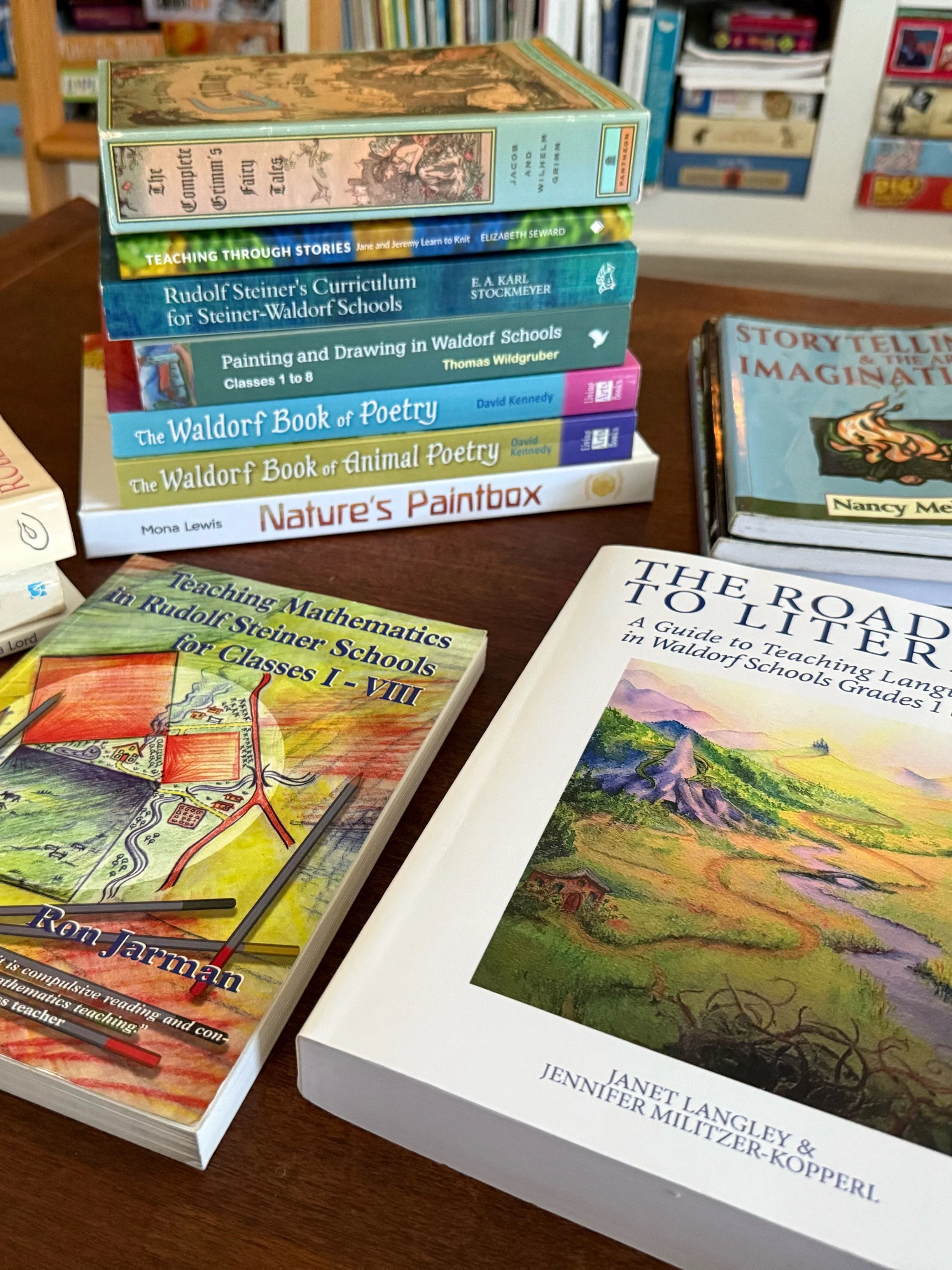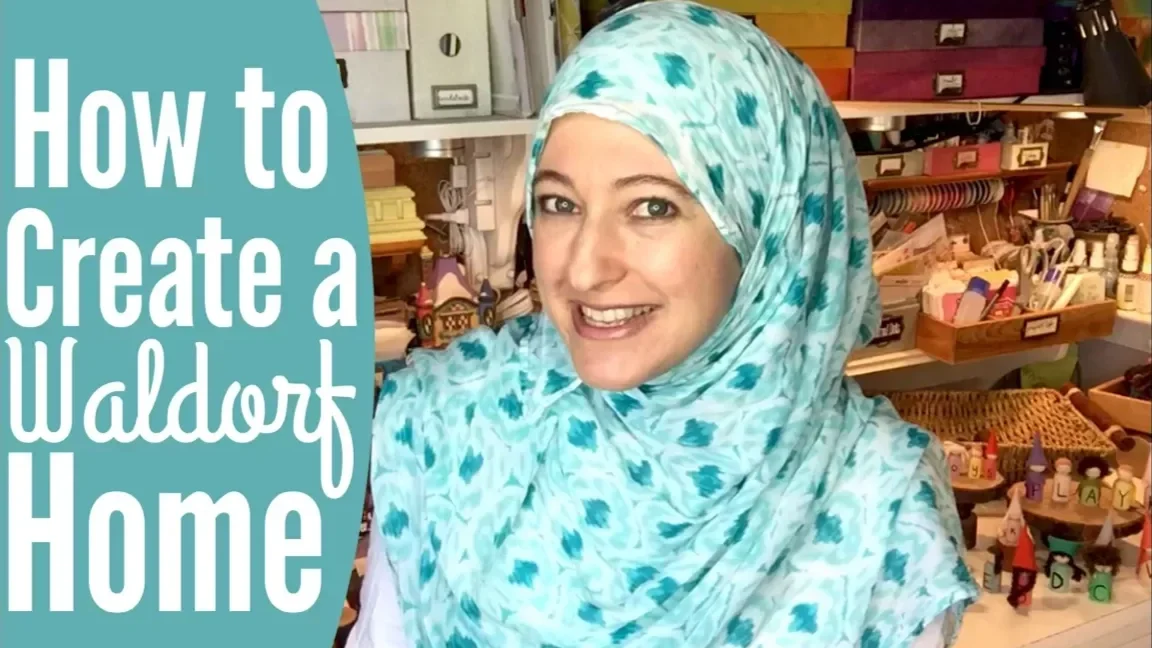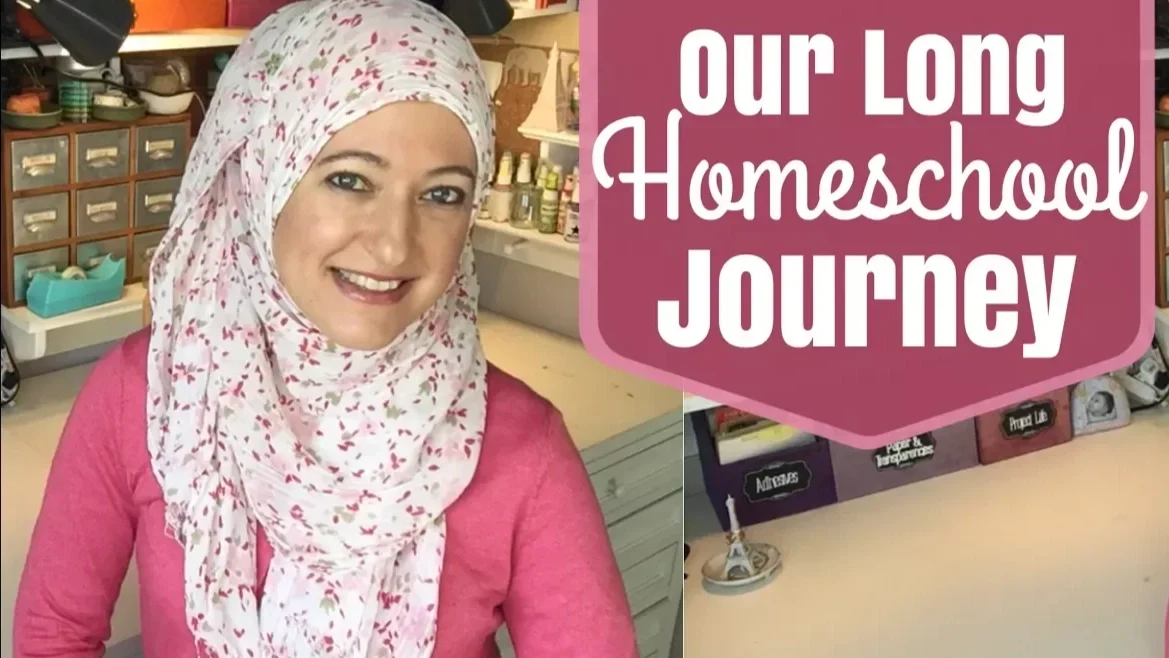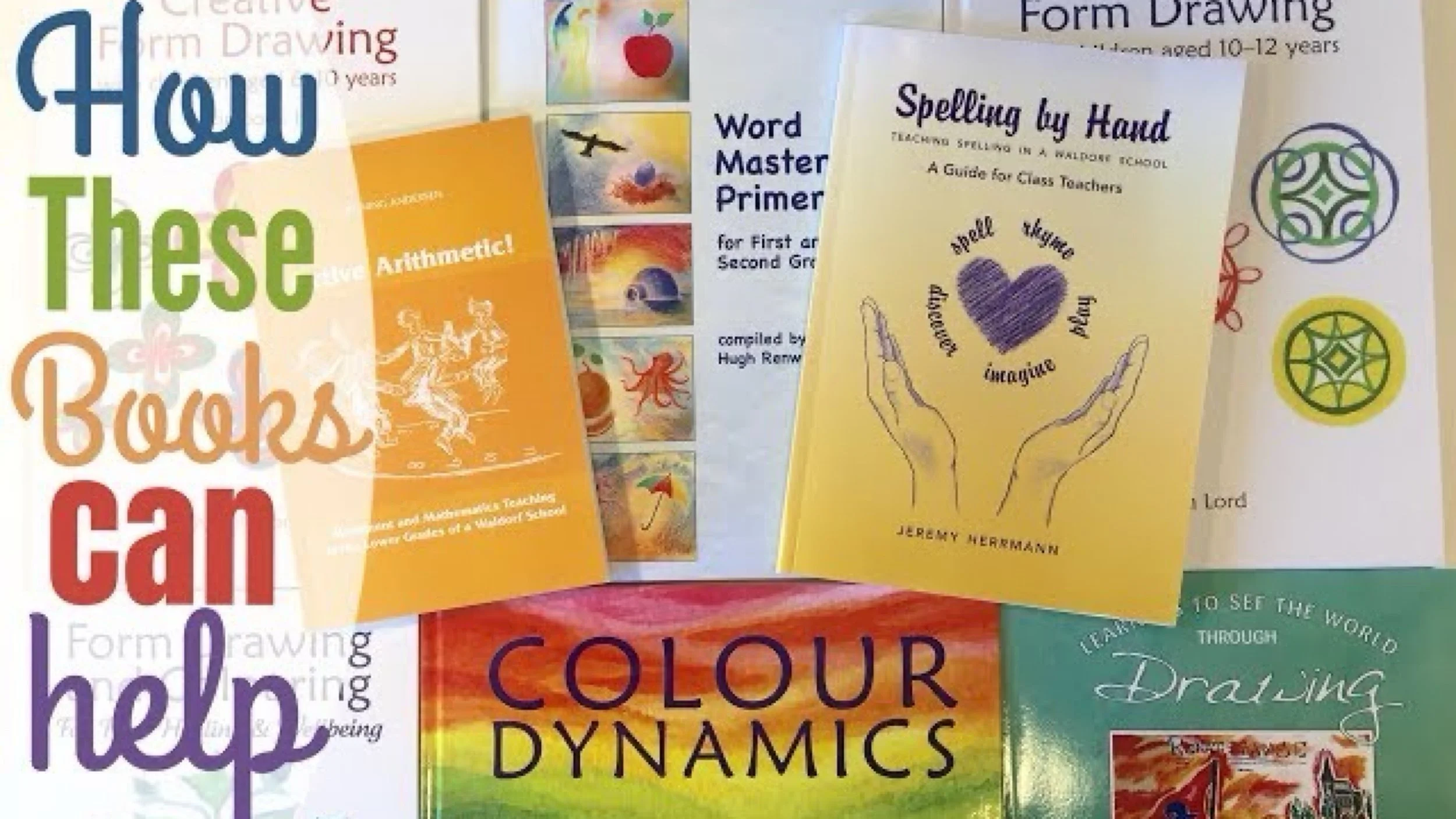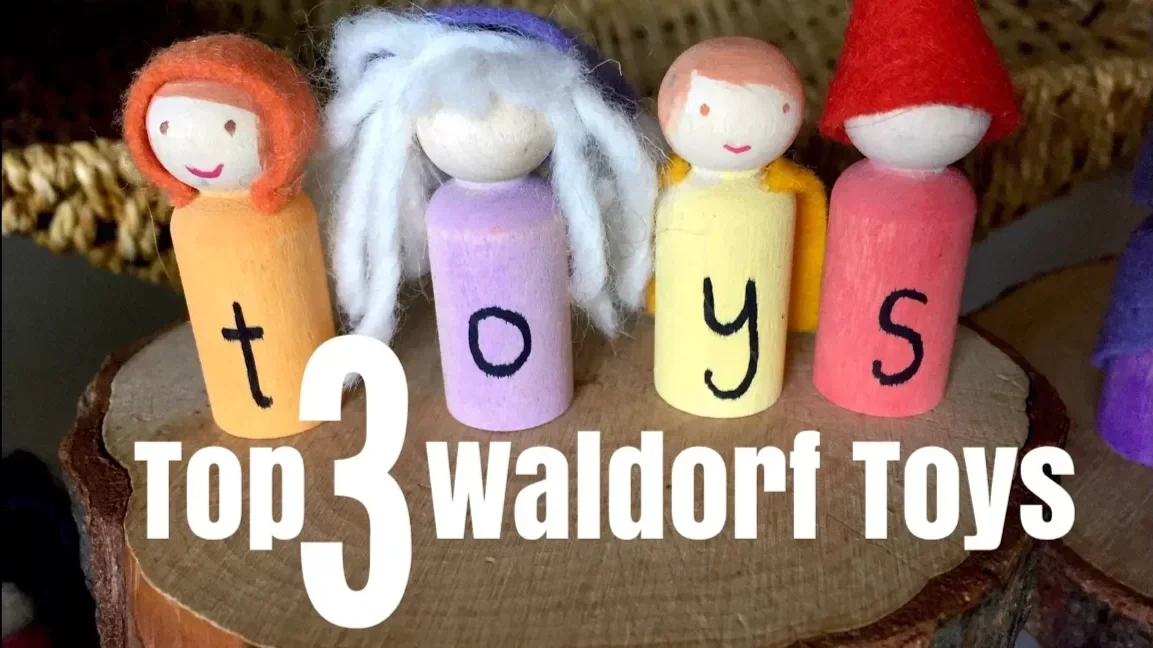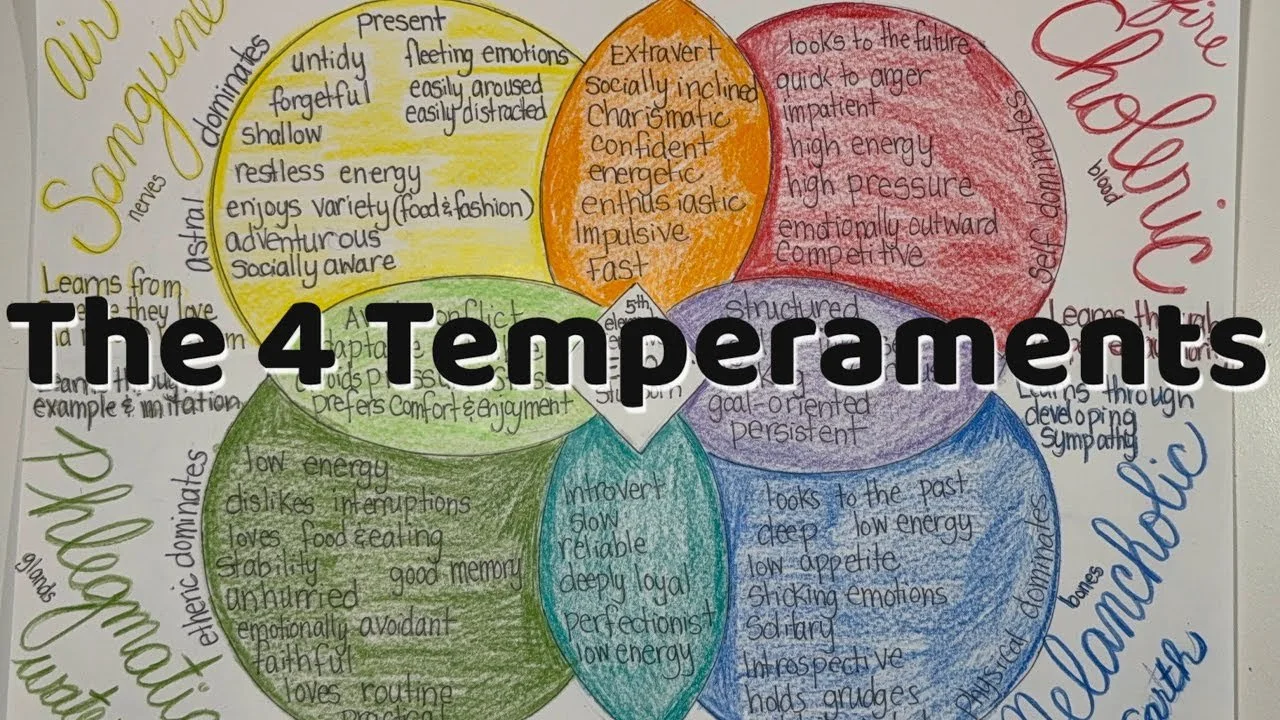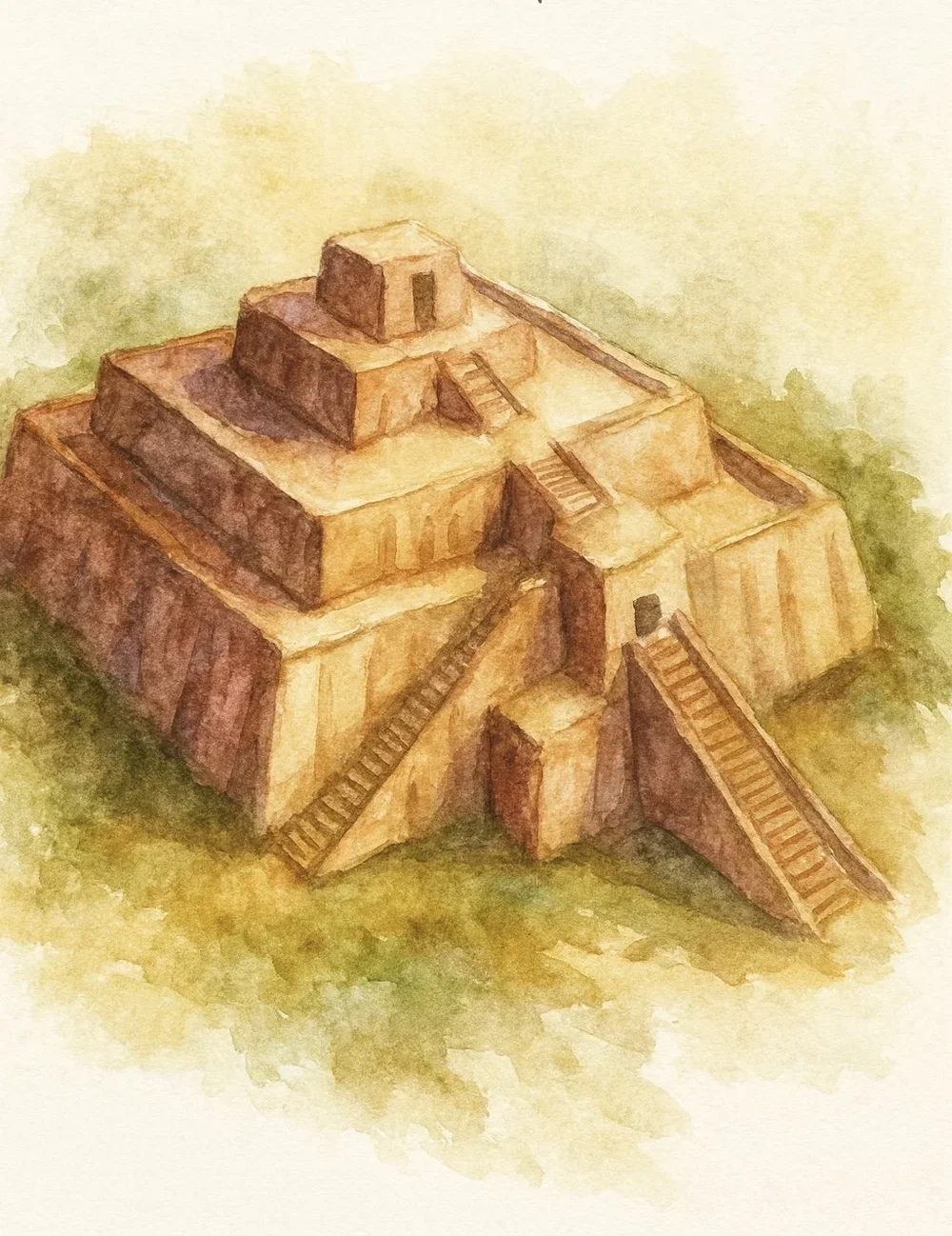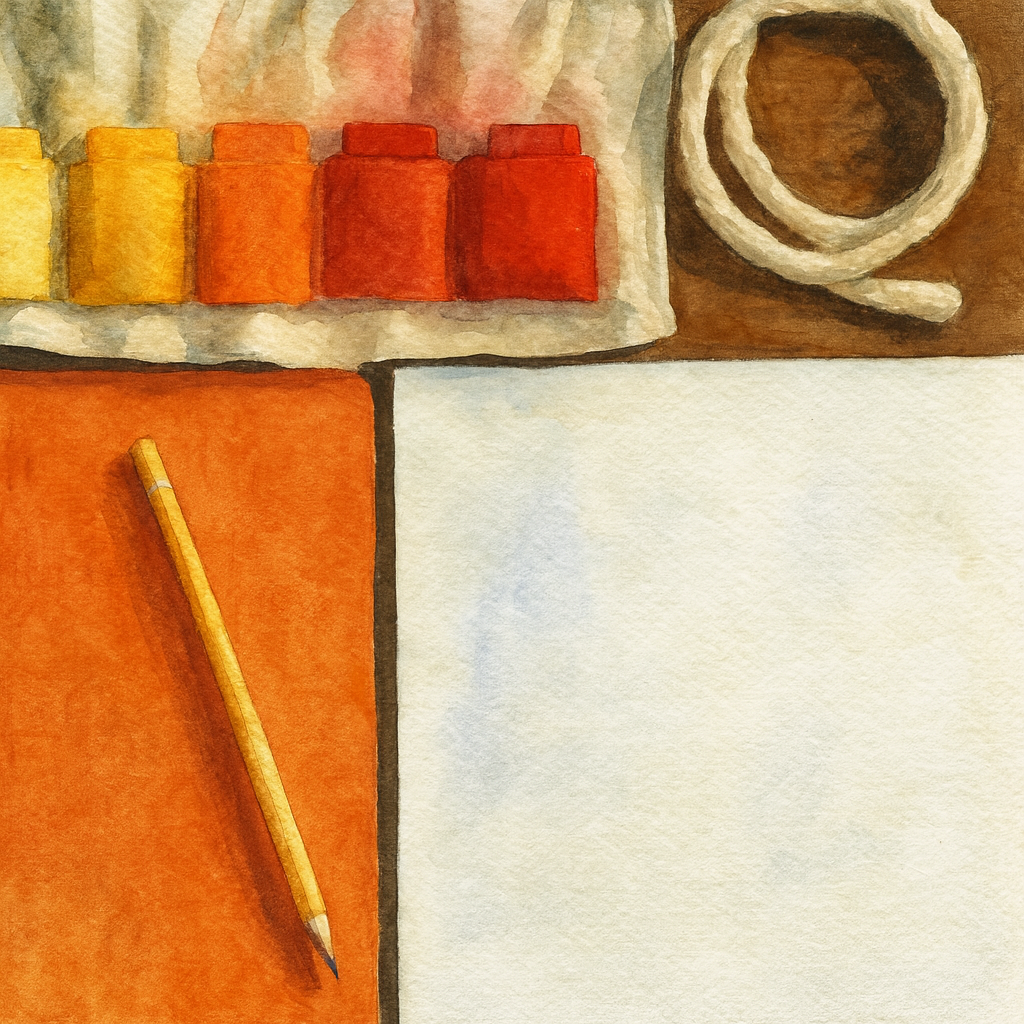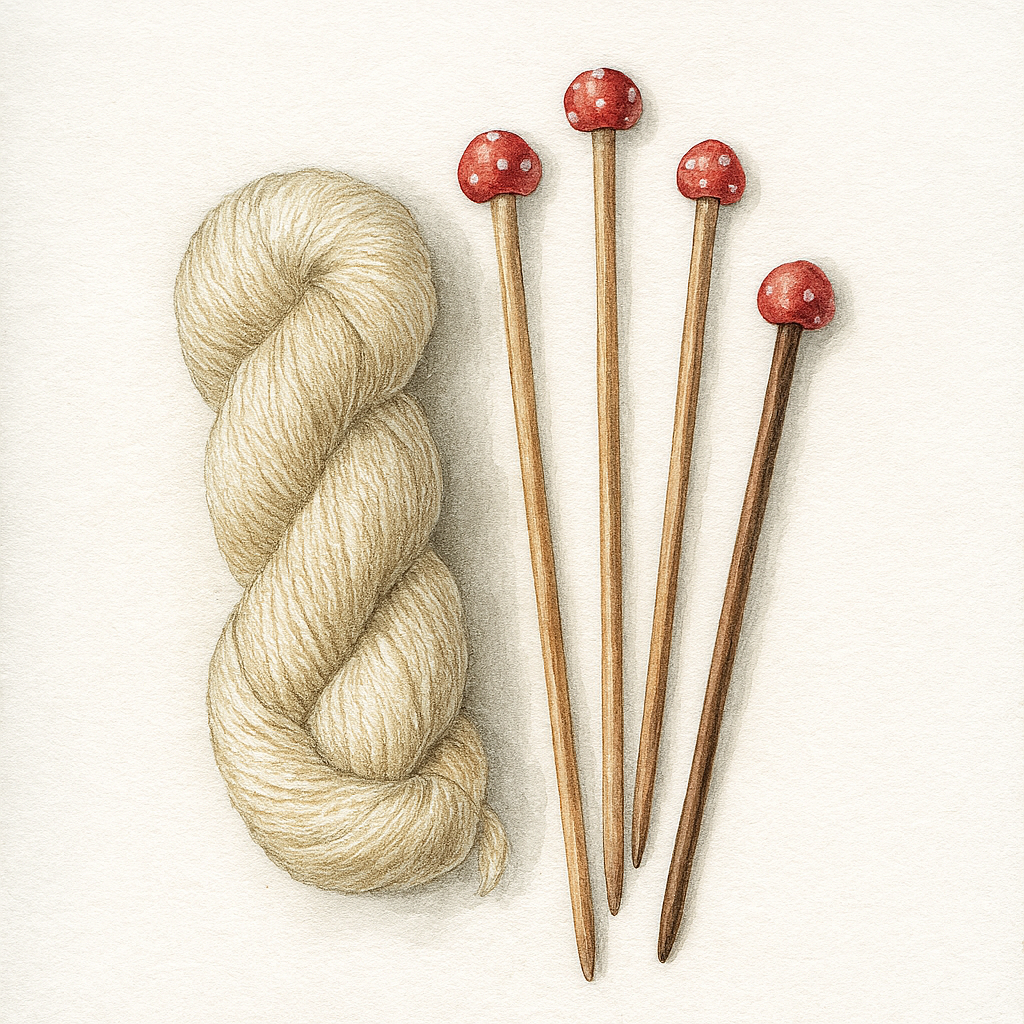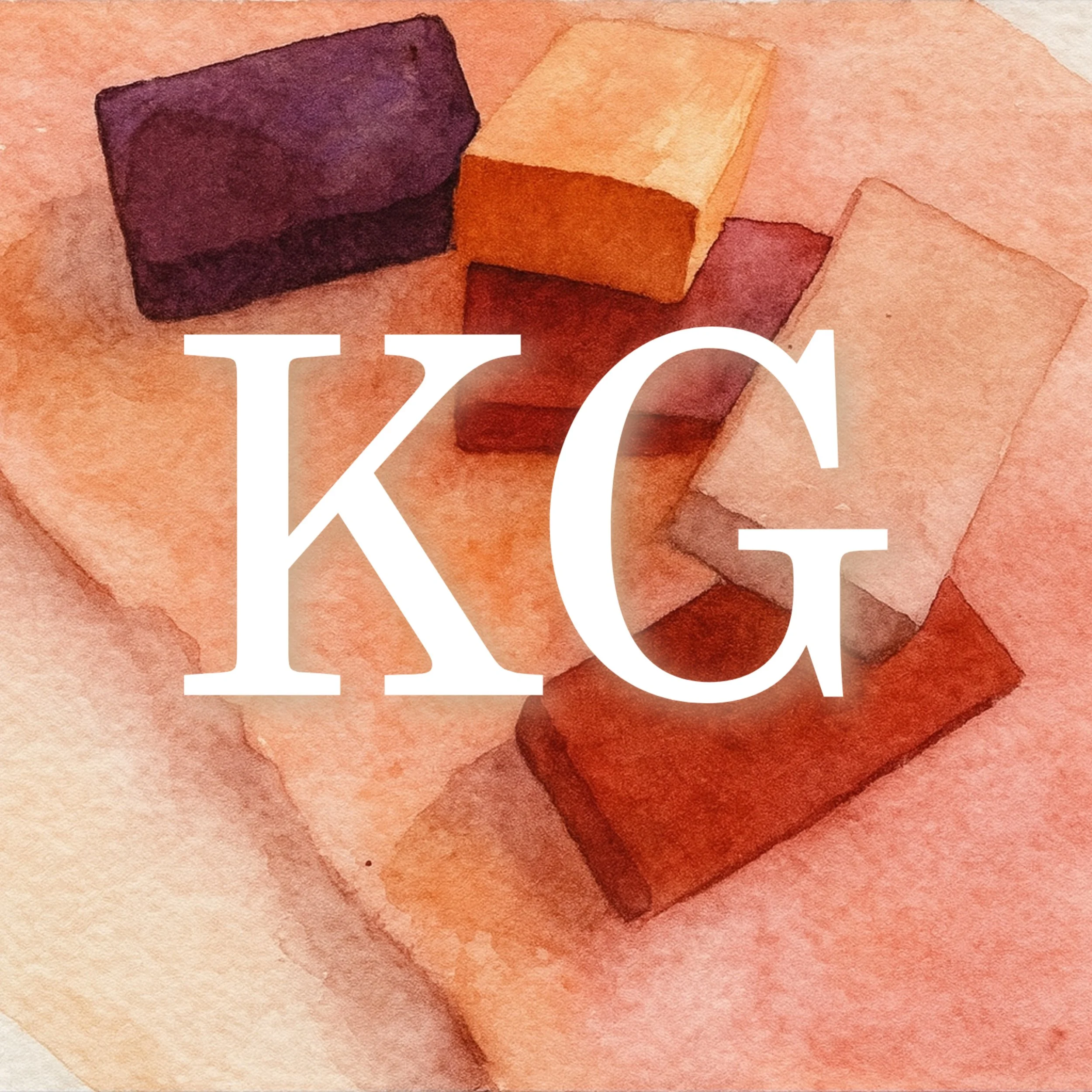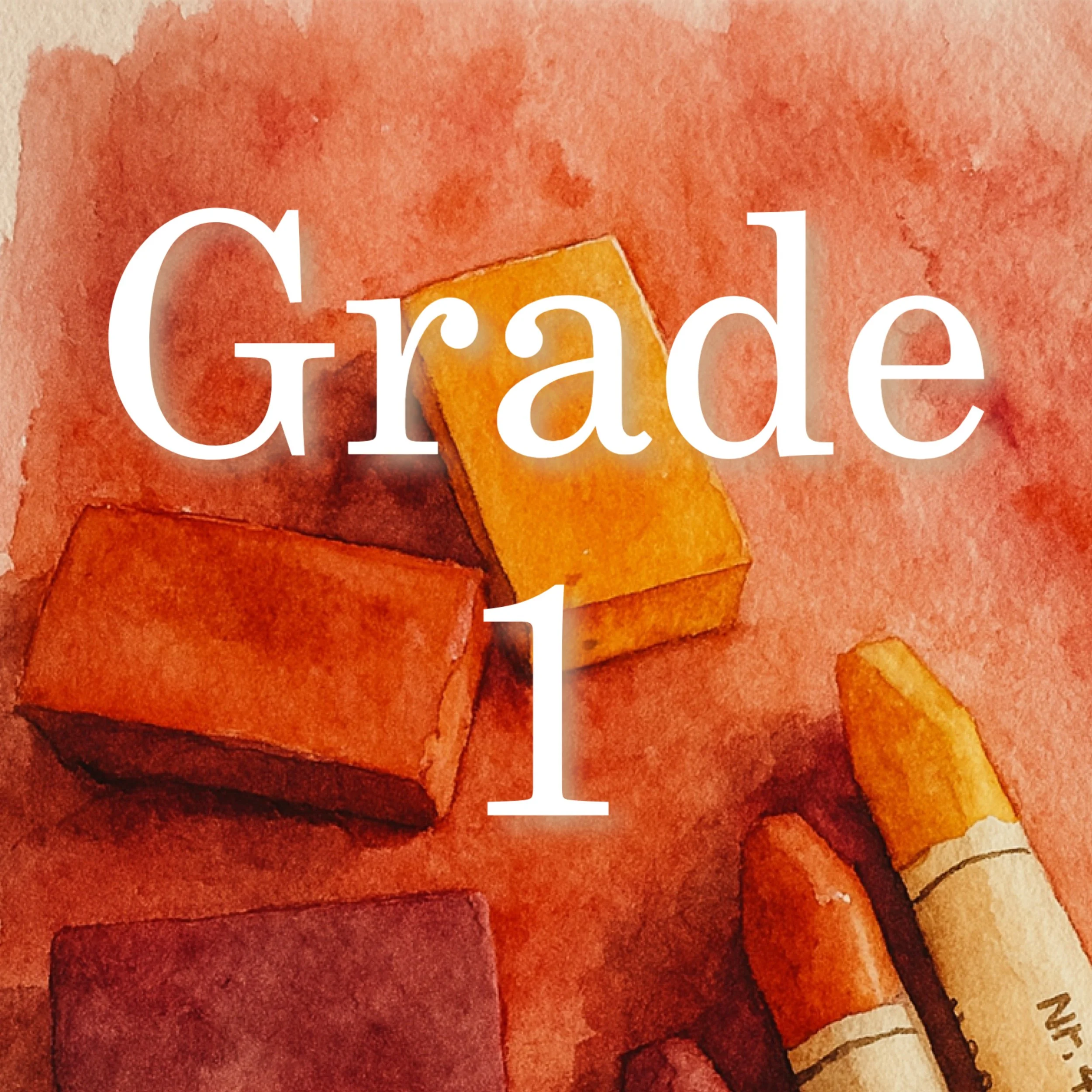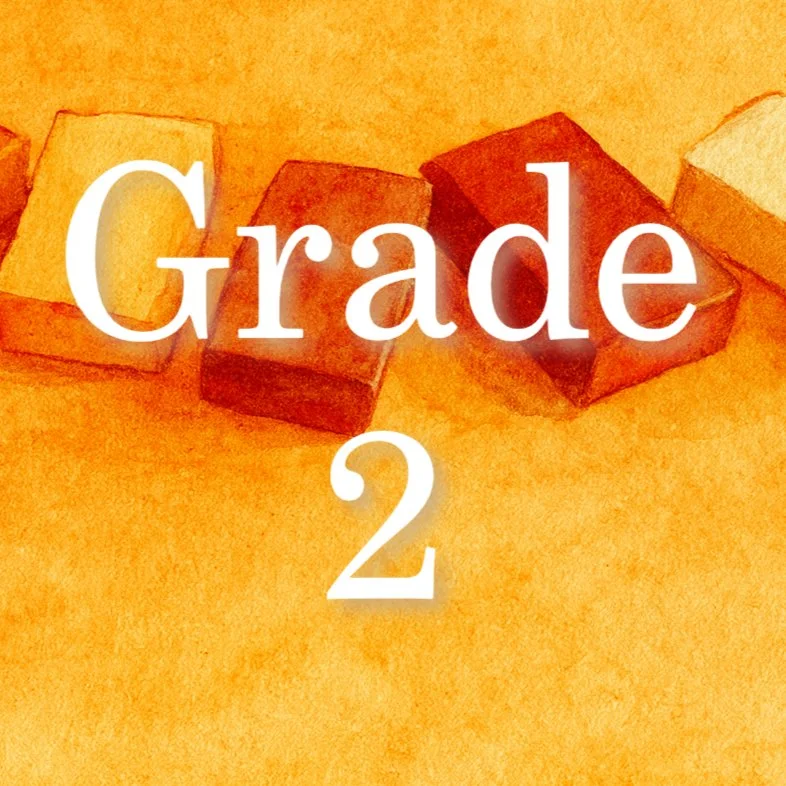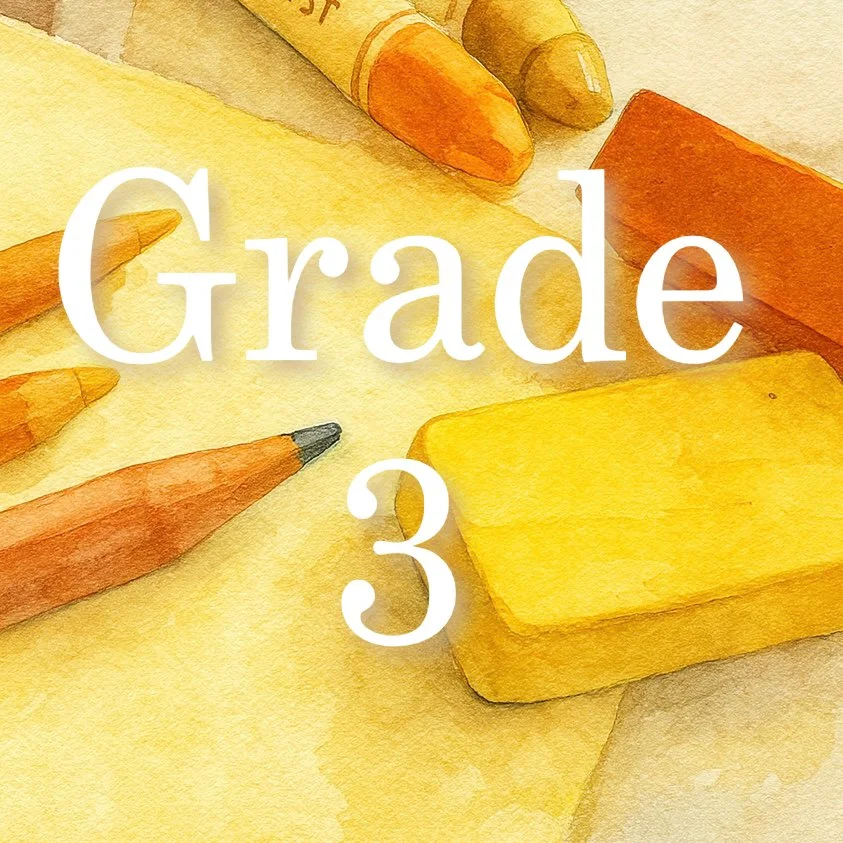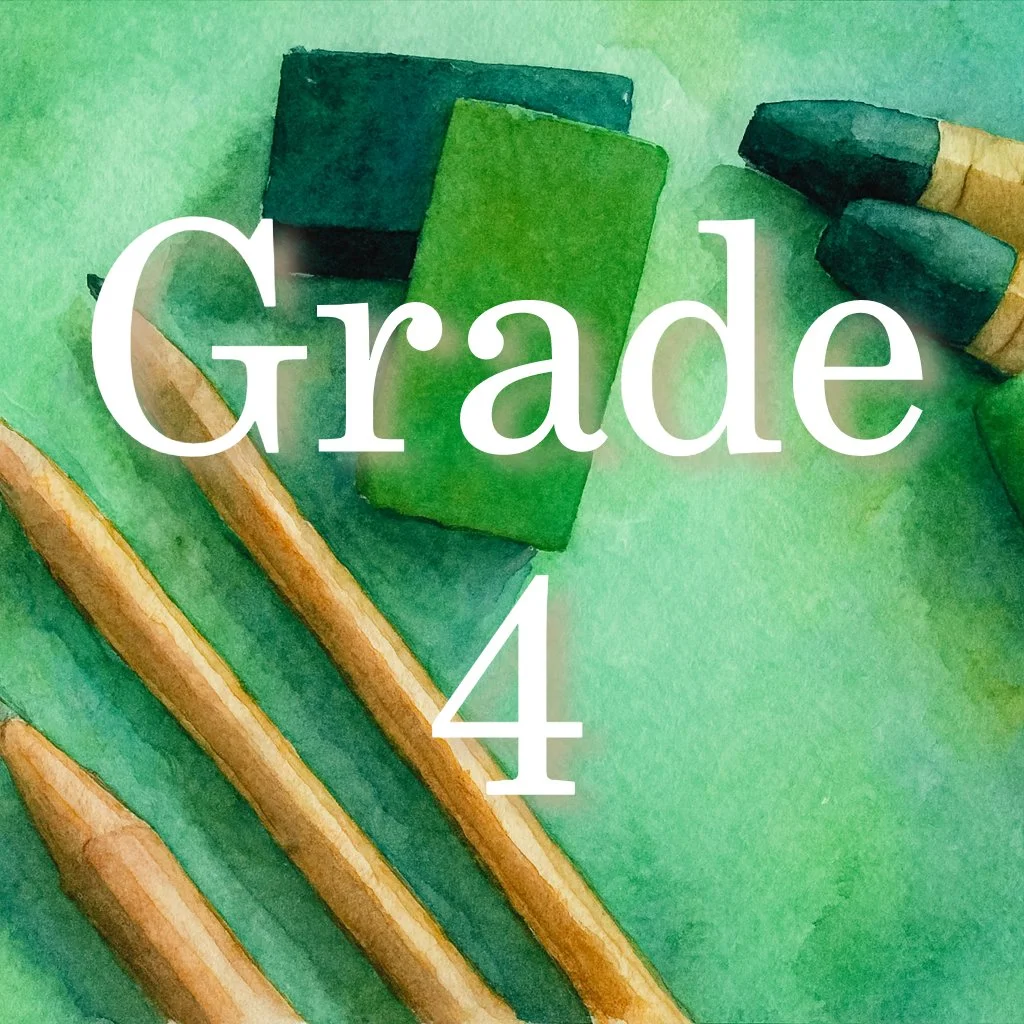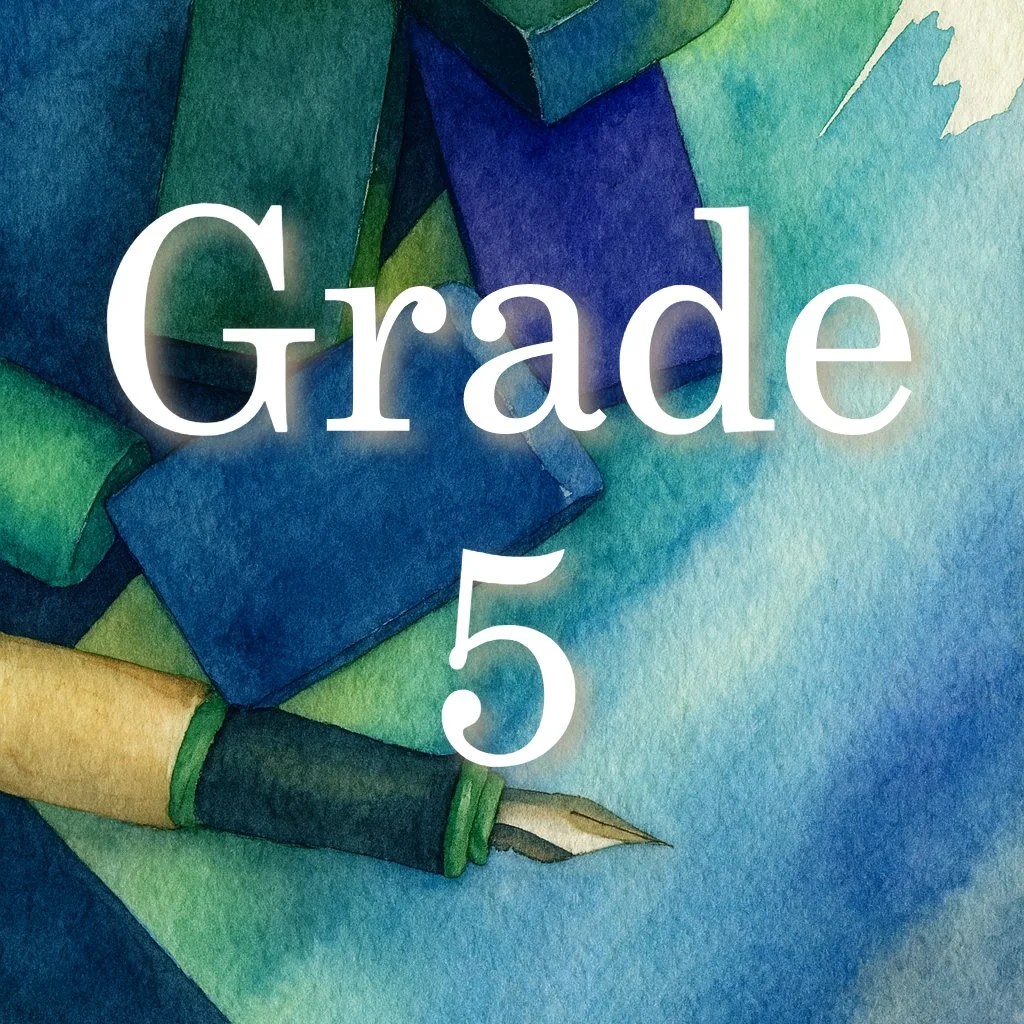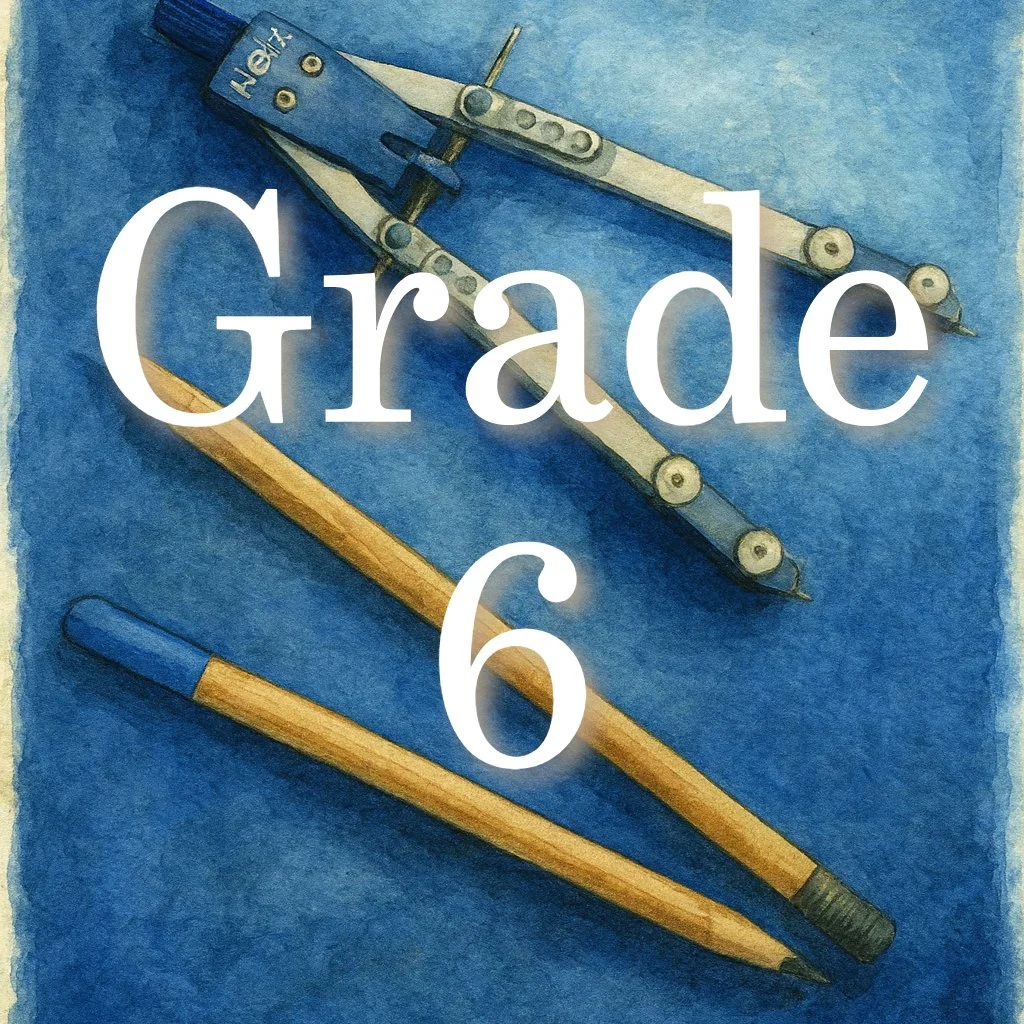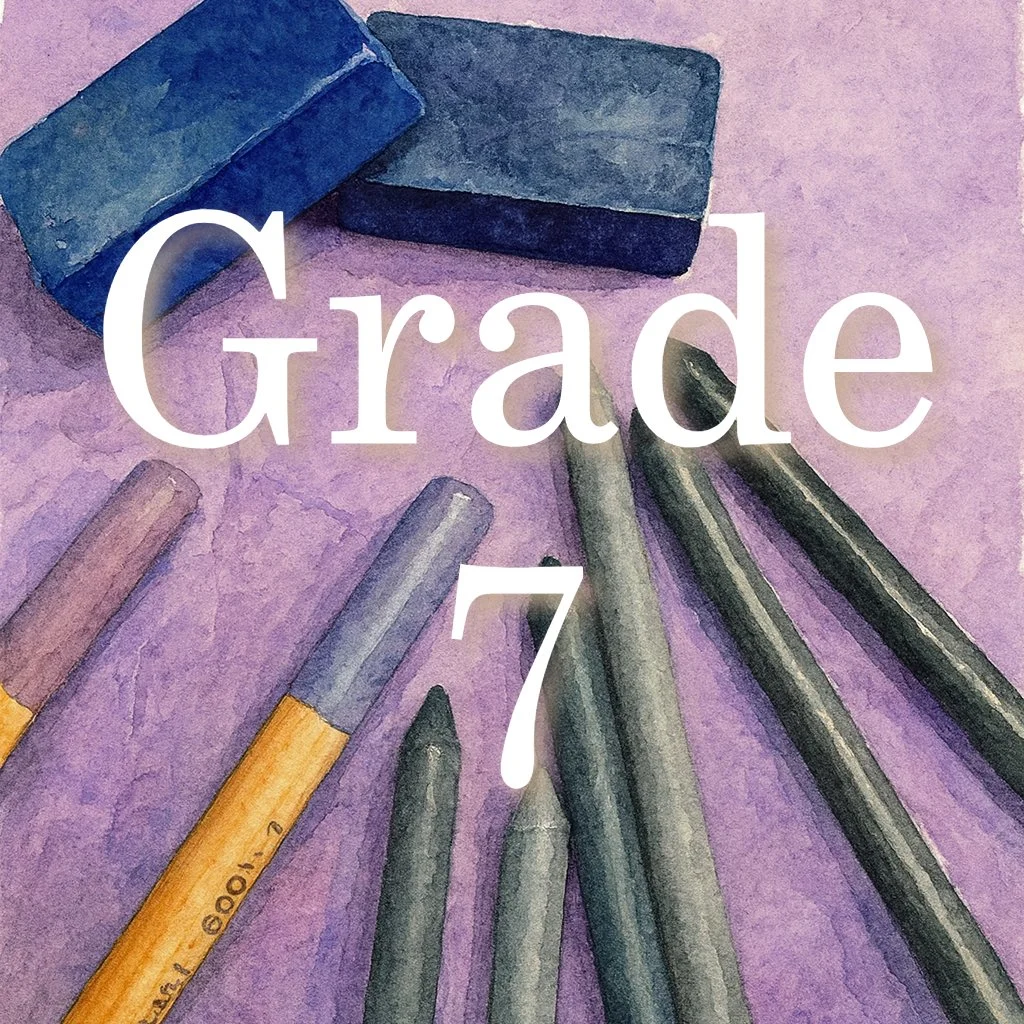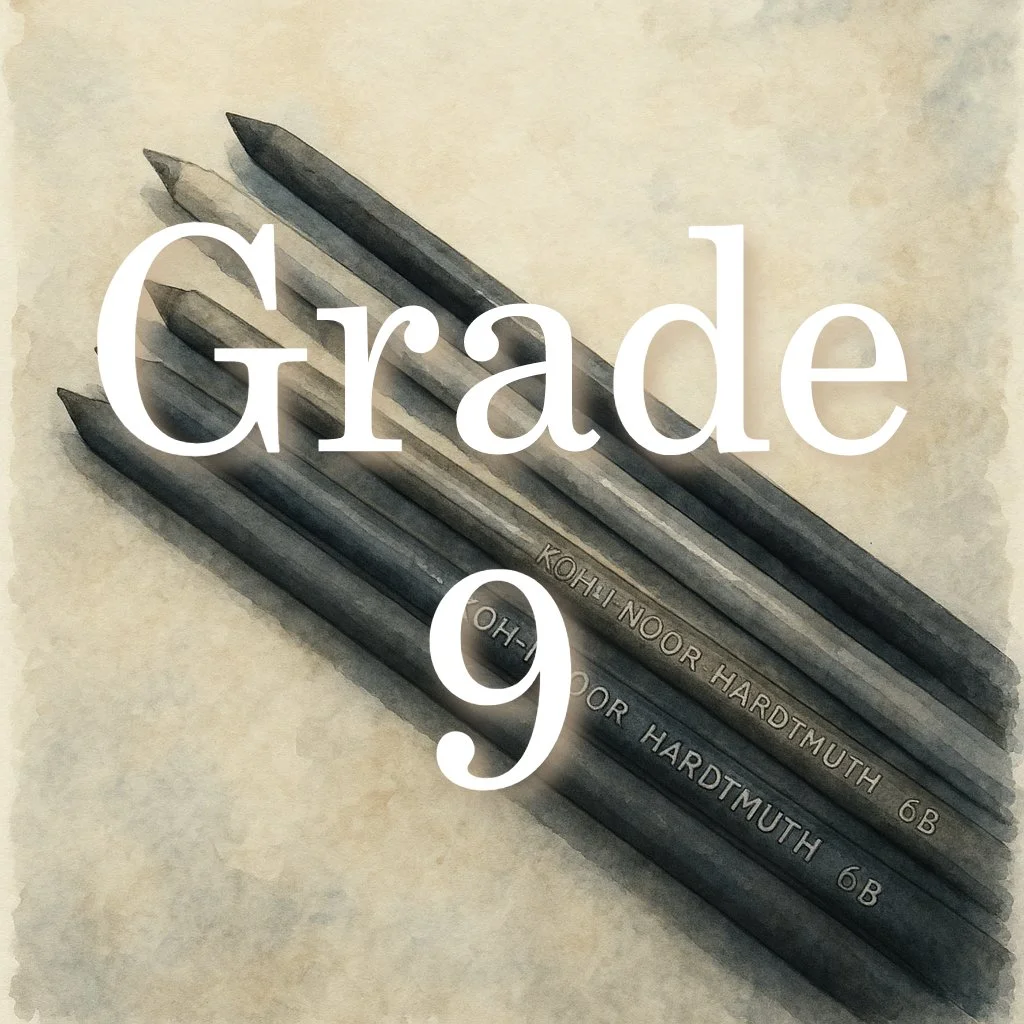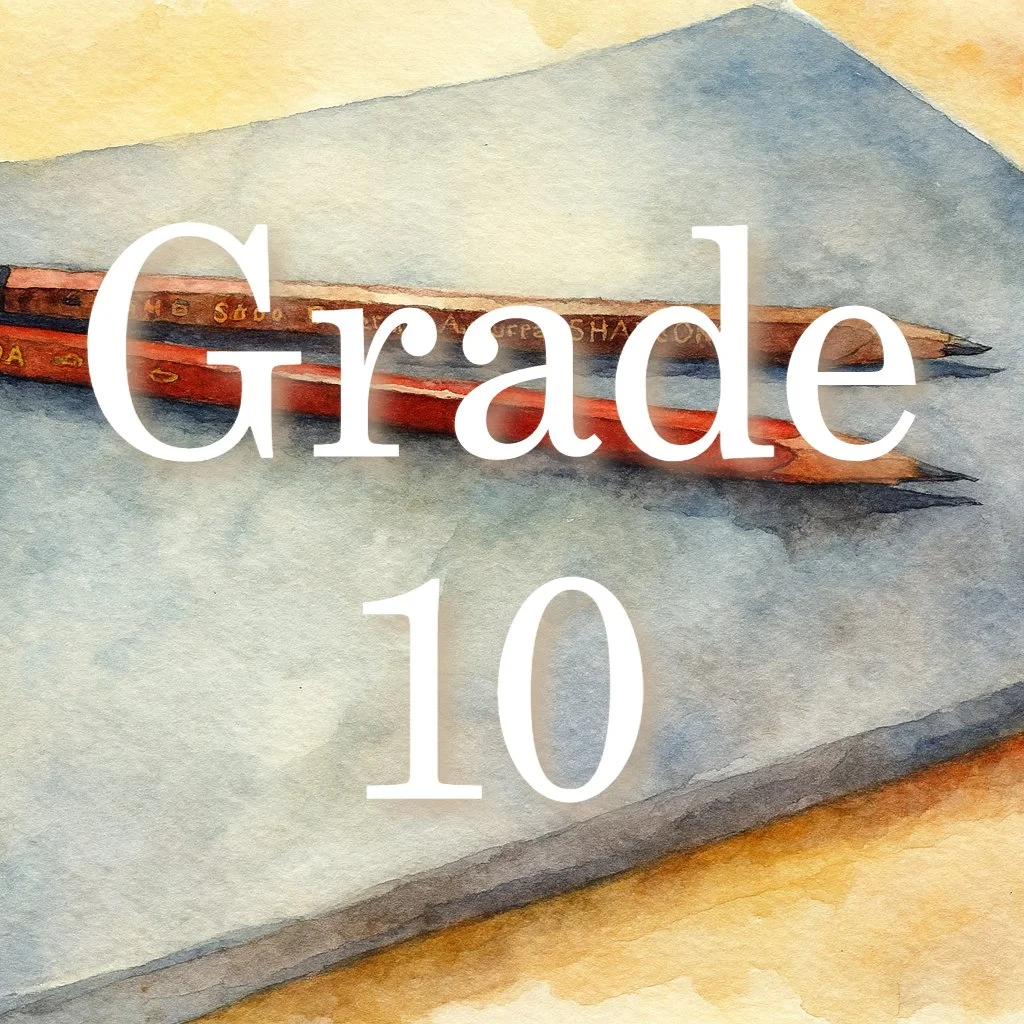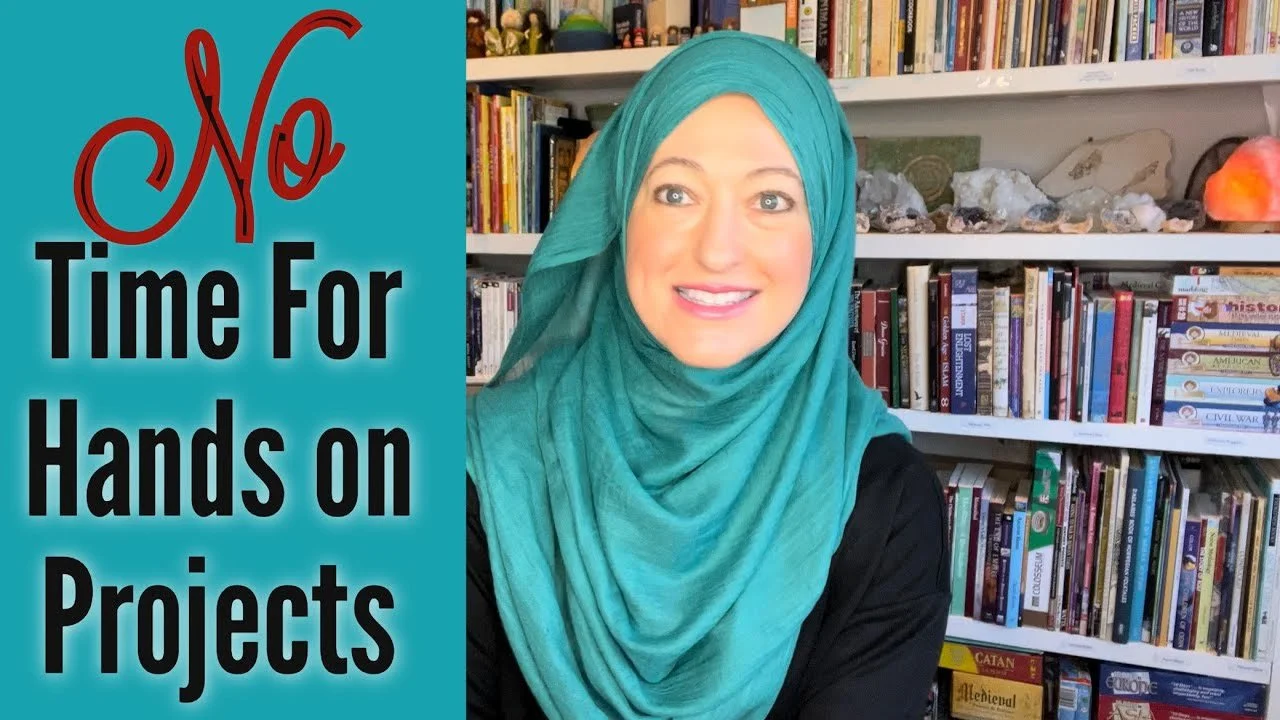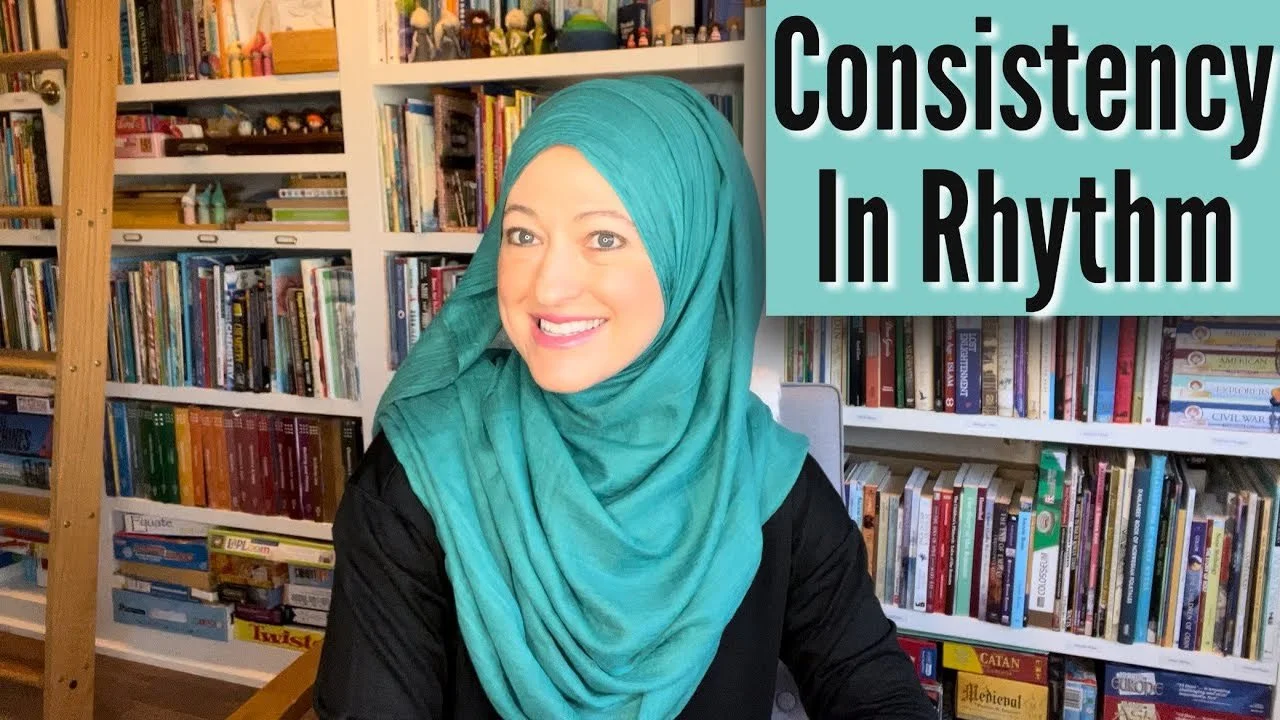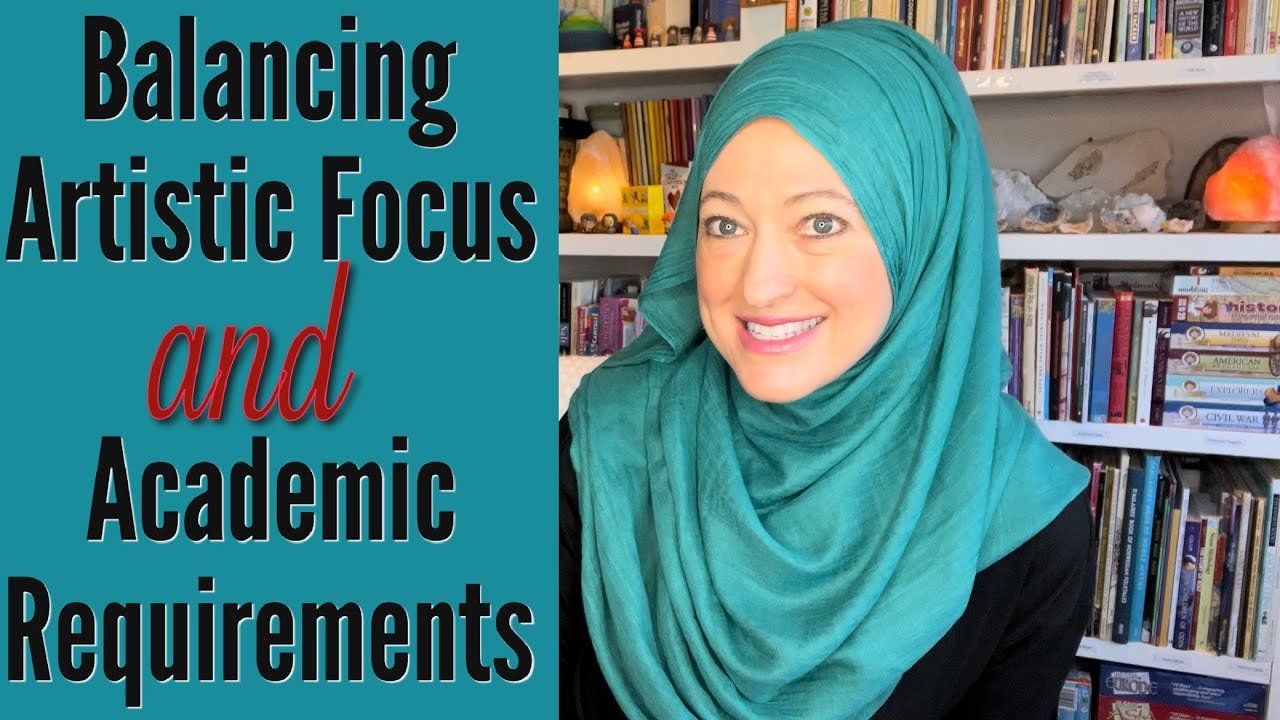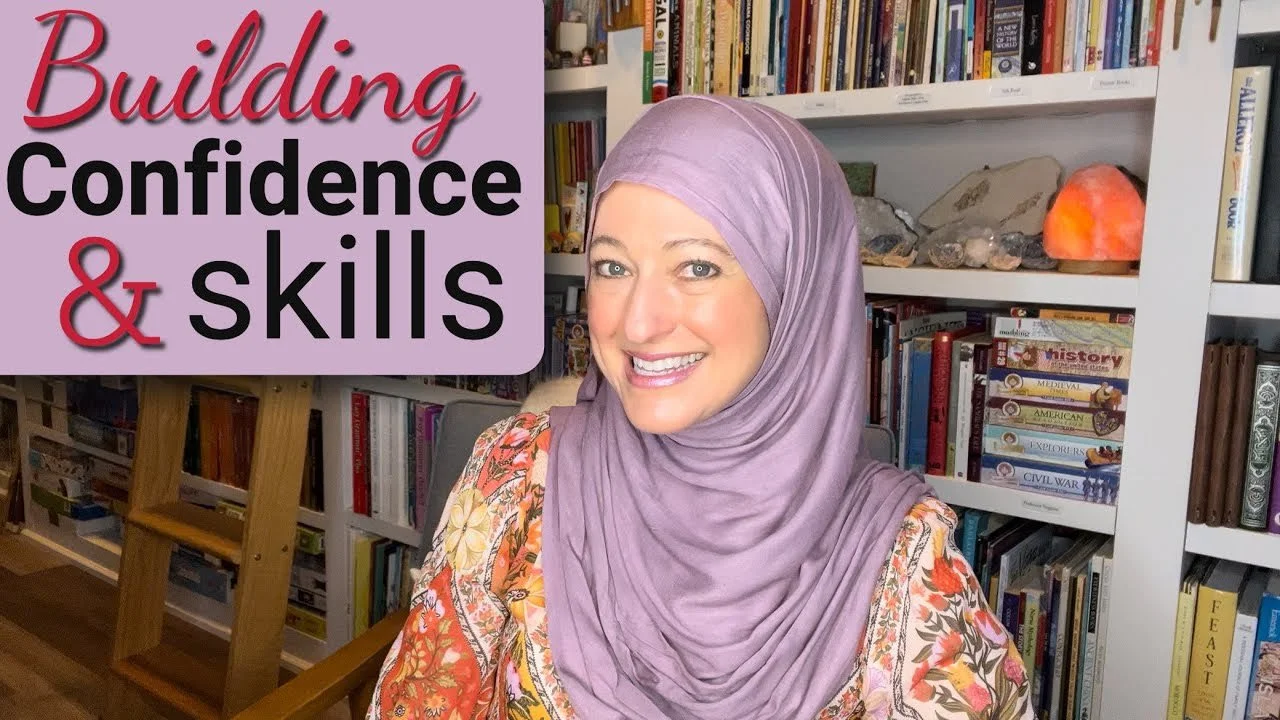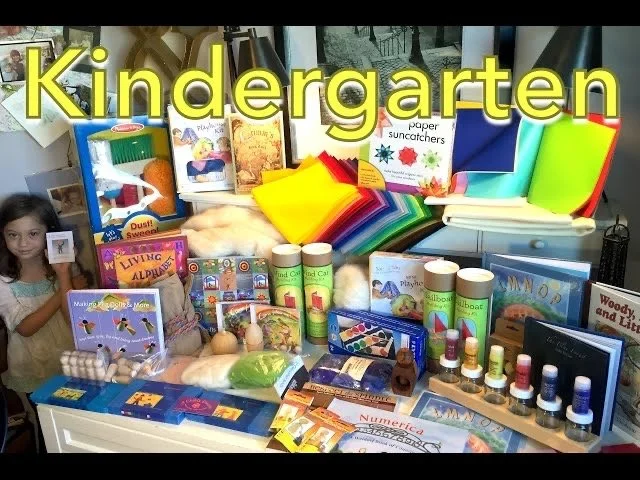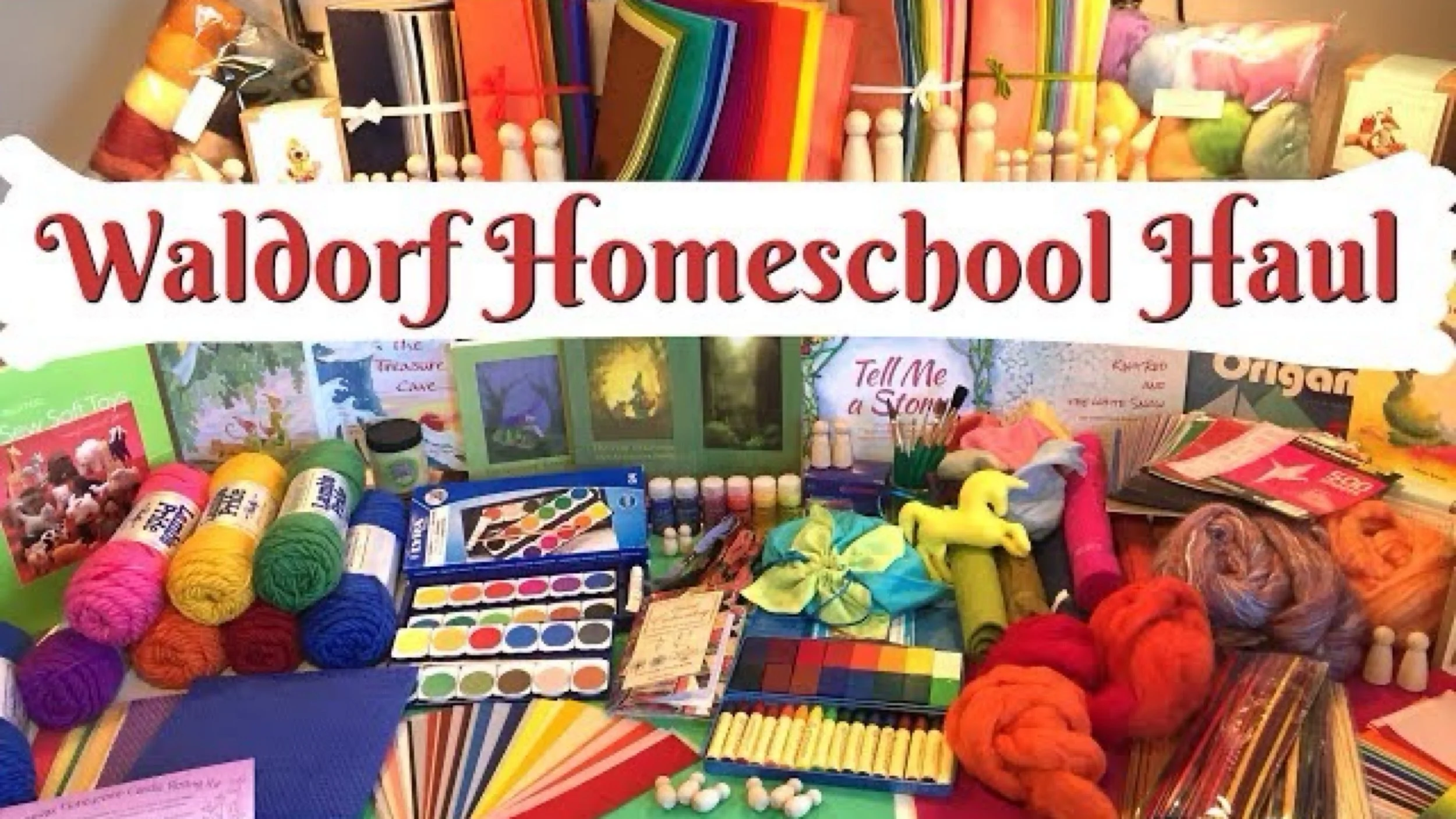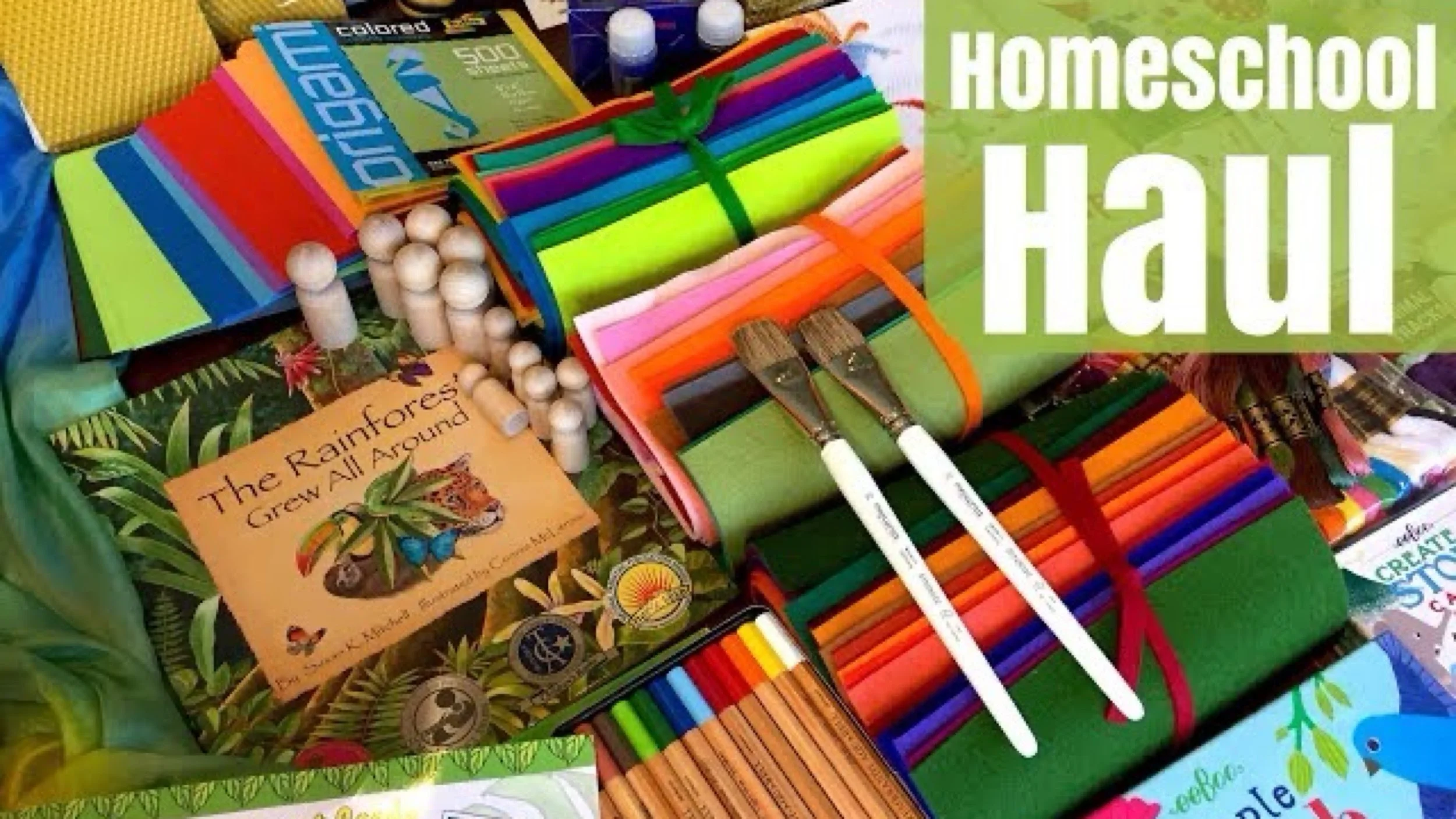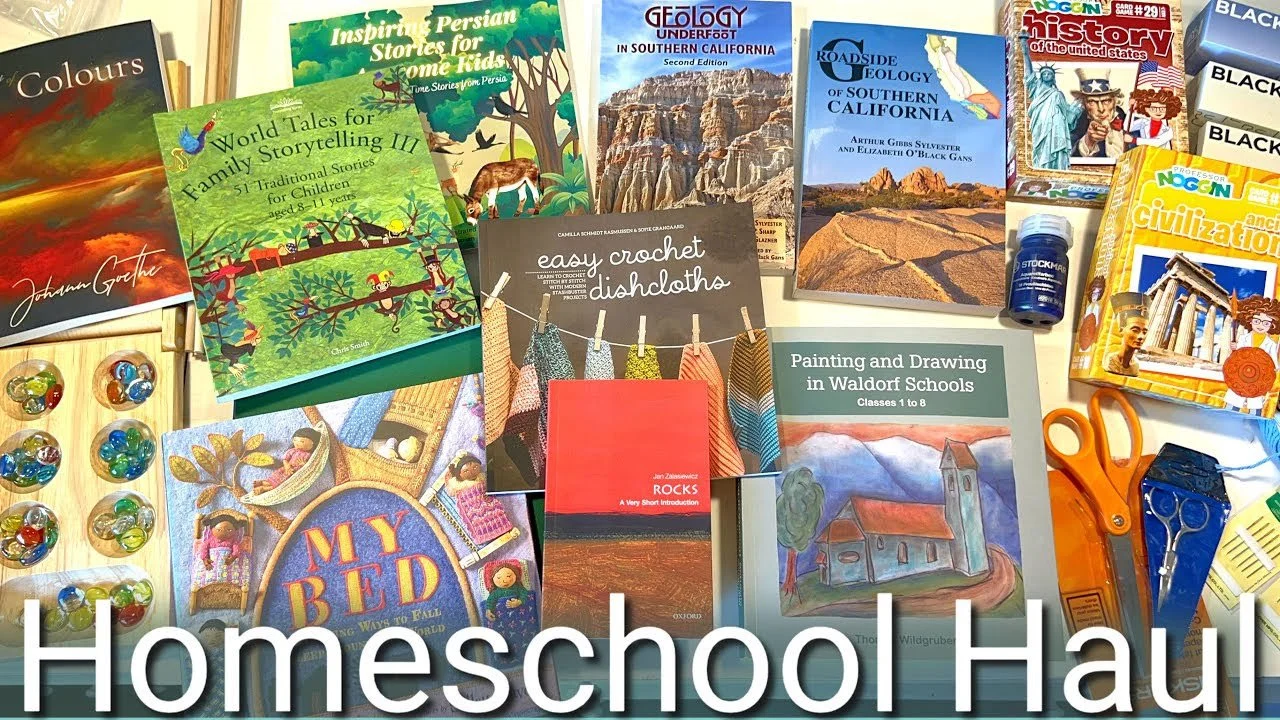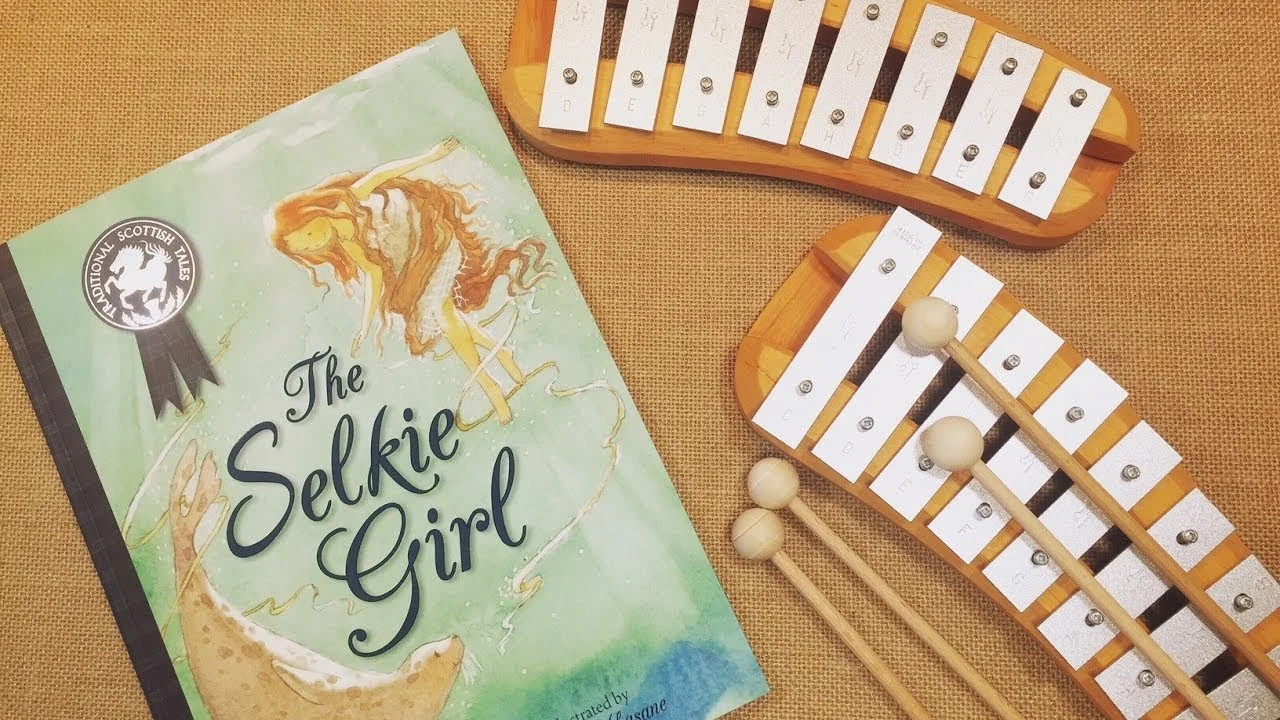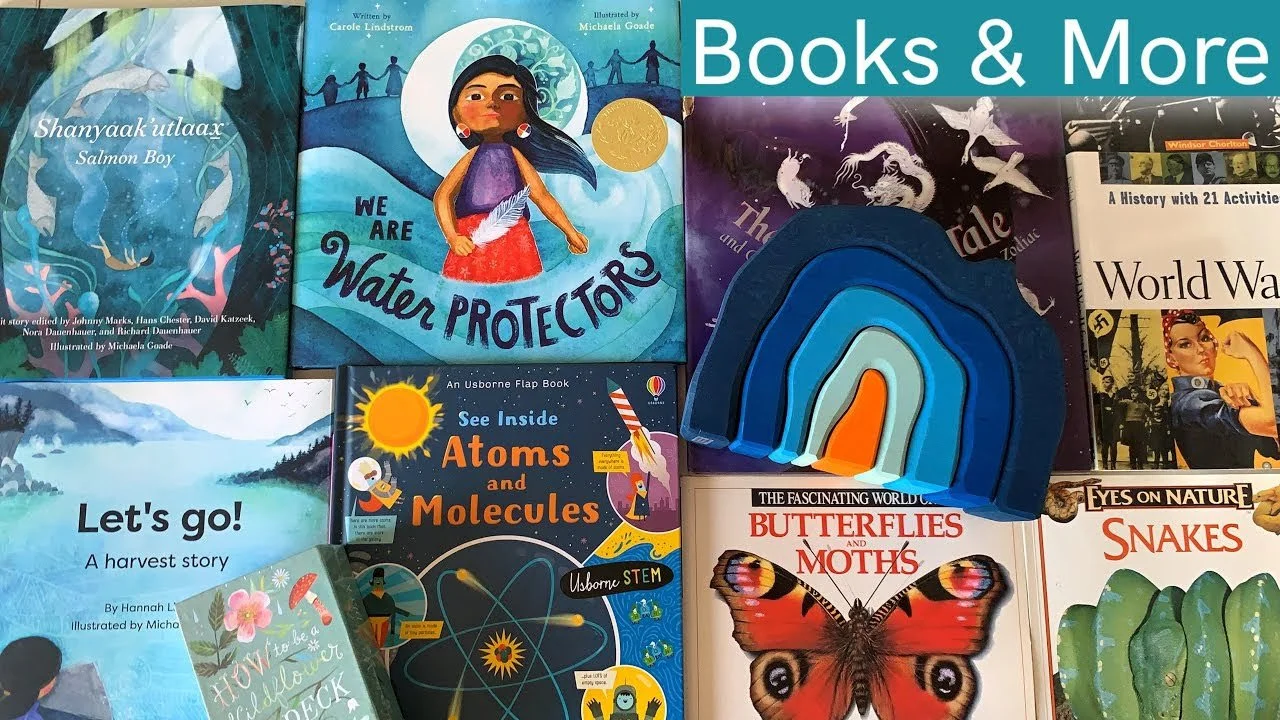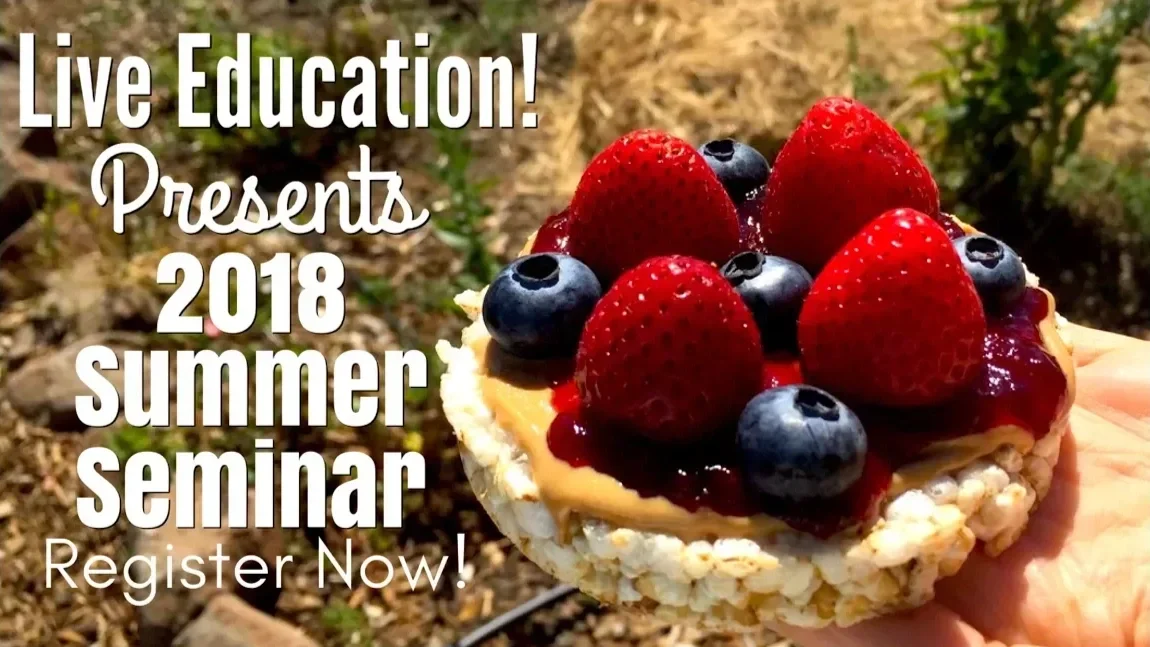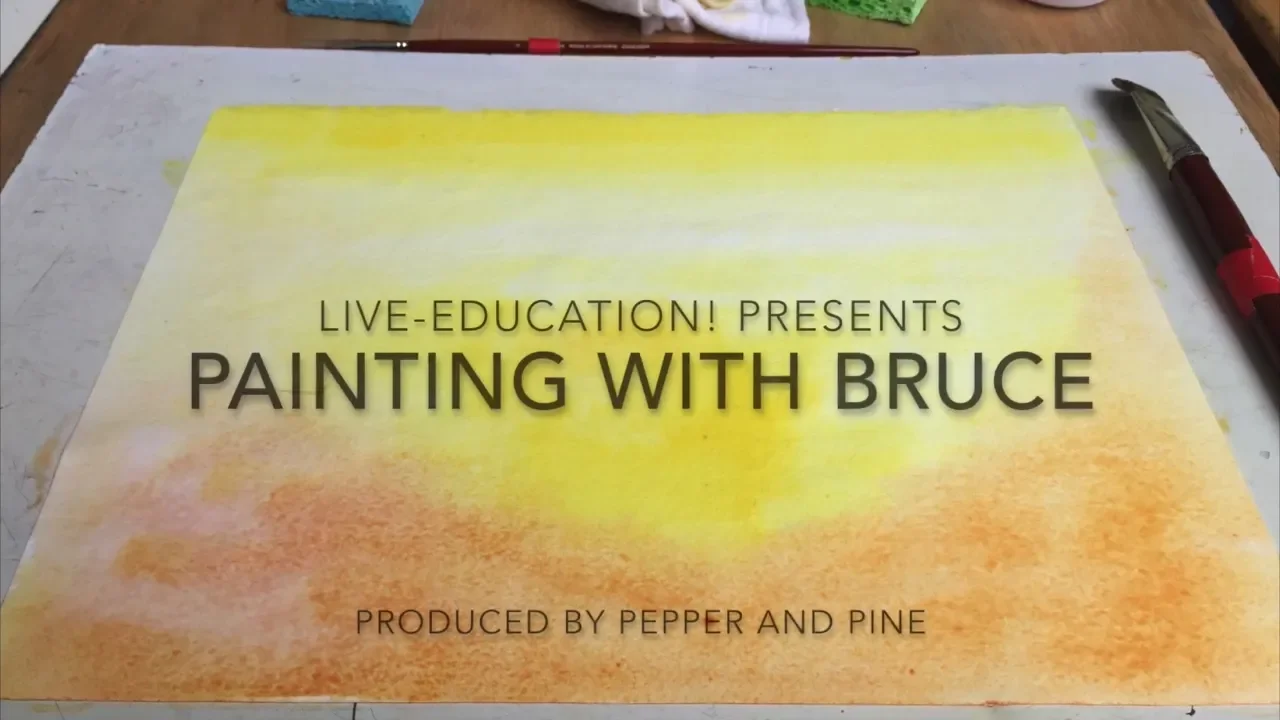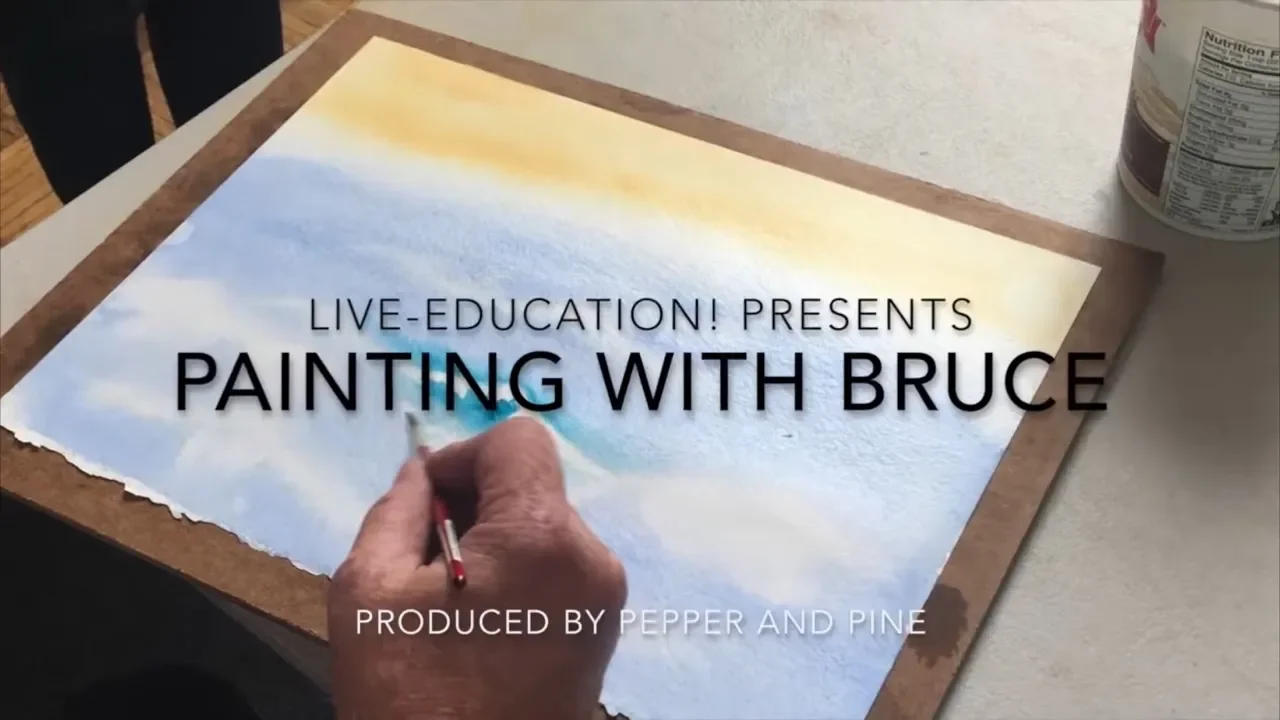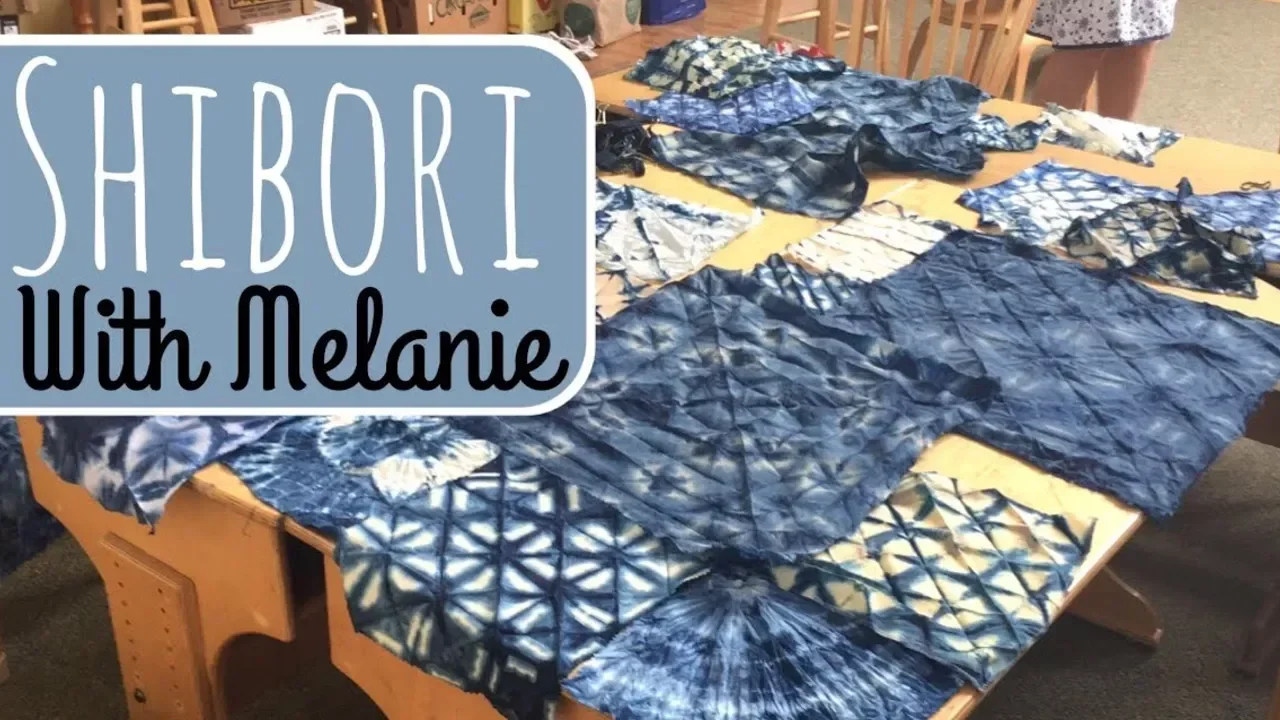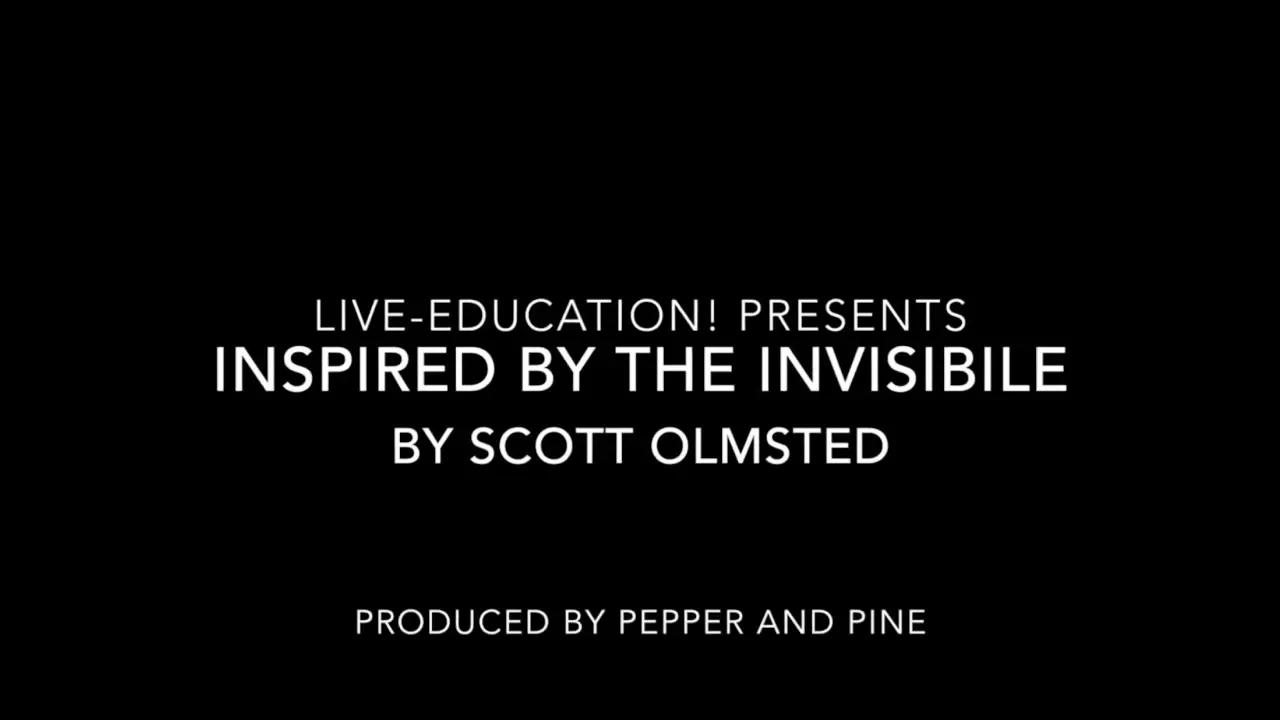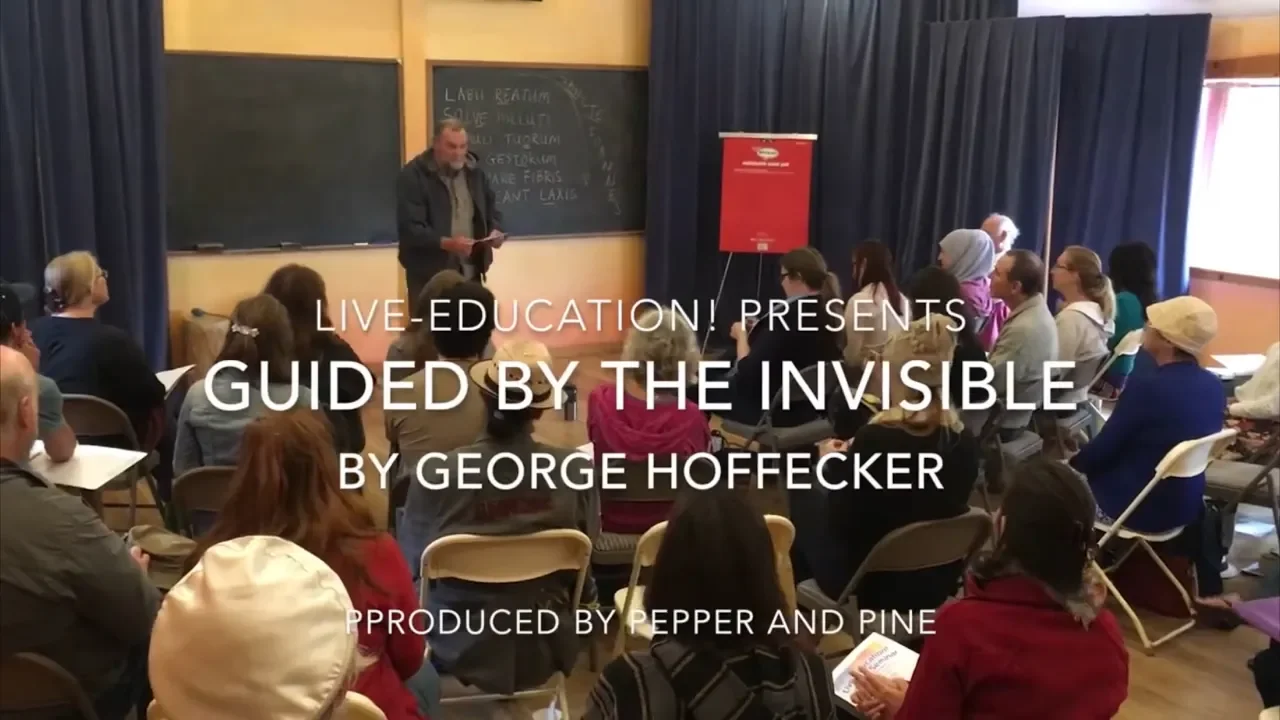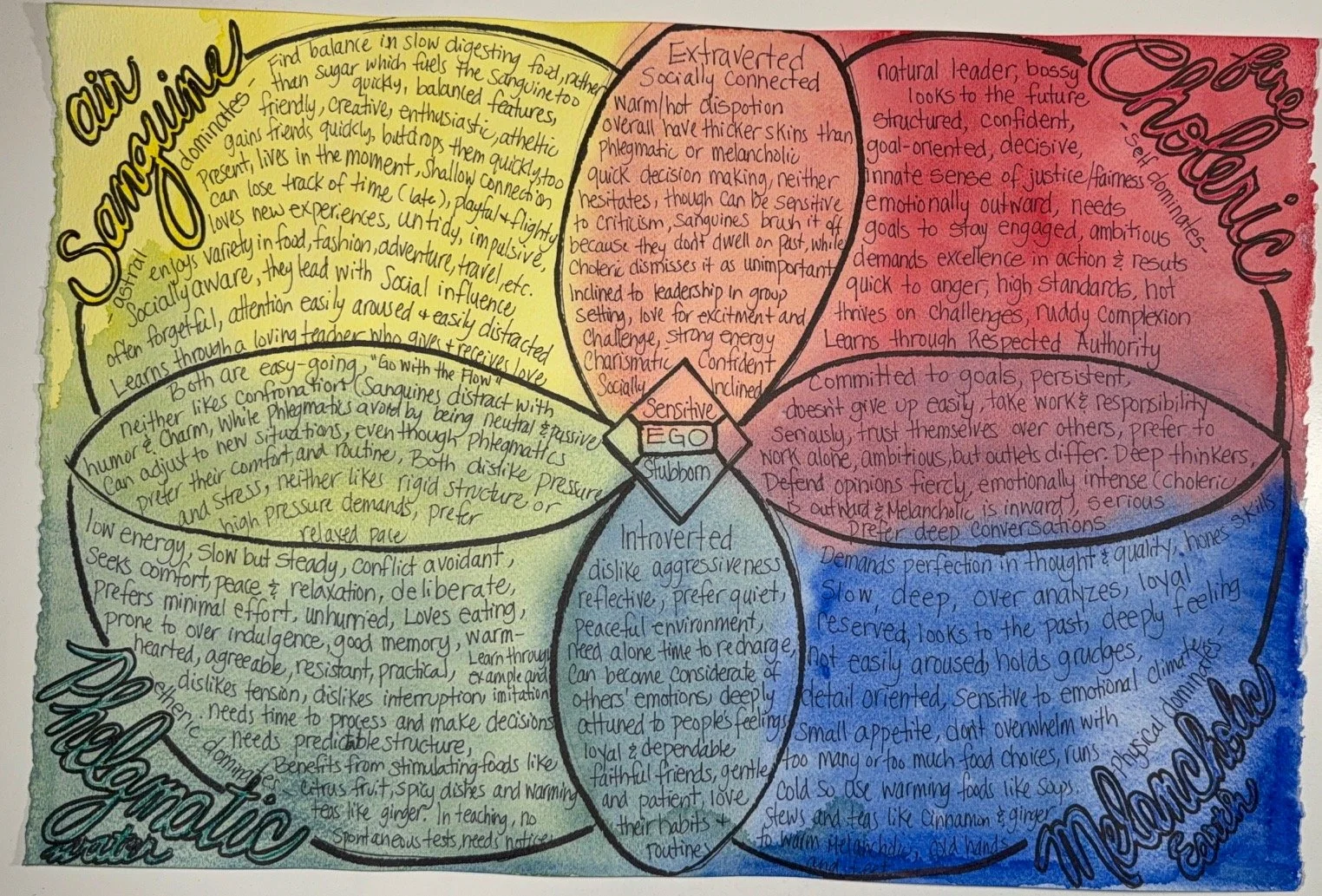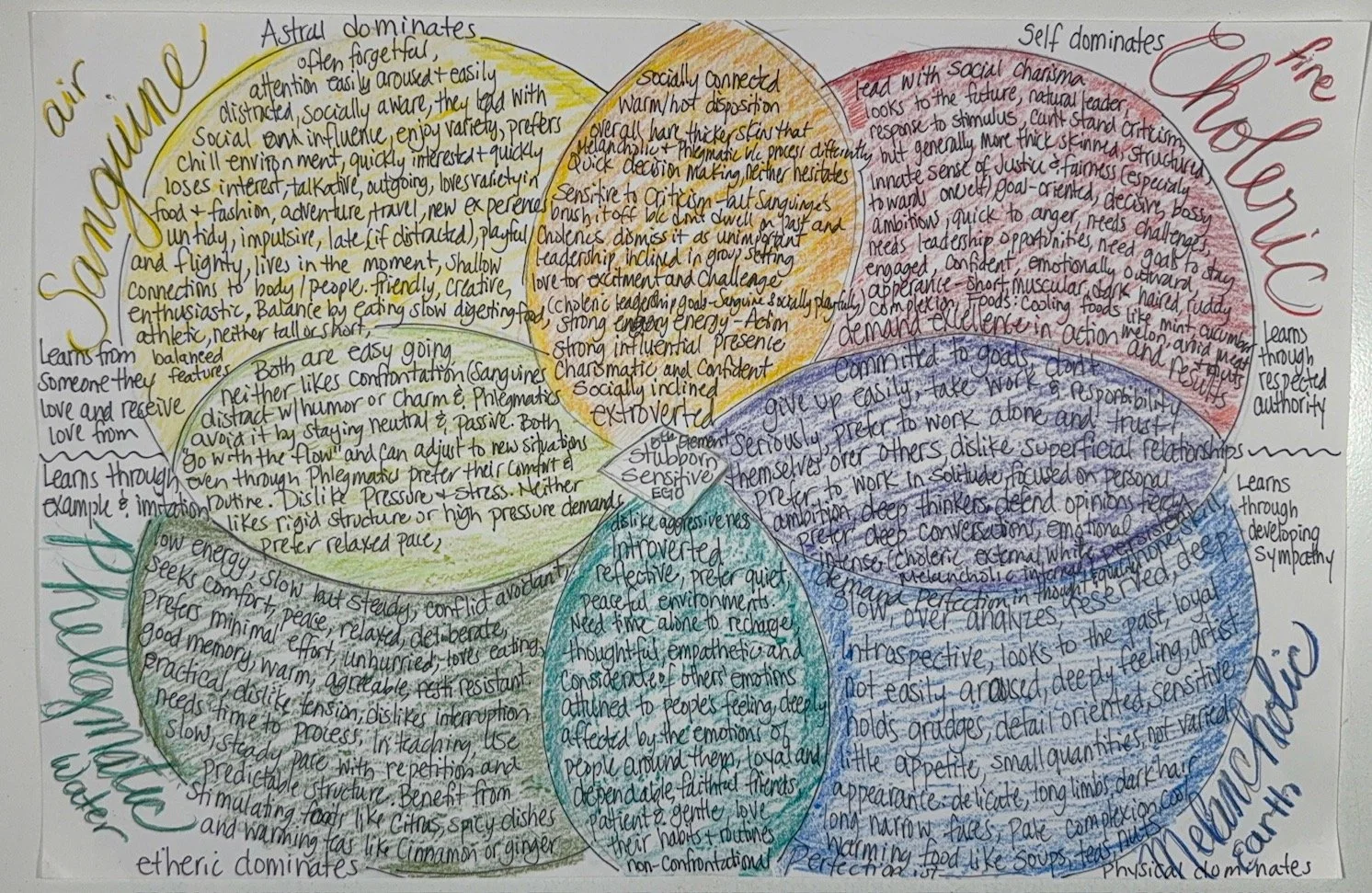Waldorf Inspired
Homeschooling
Homeschooling using the Waldorf pedagogy is a wonderful option for families, but sometimes, breaking down the philosophy and navigating how to practically implement it can be challenging. You may begin here to get acquainted with the Waldorf pedagogy. I share my how we implement of the main lesson, how we do block rotations, and what subjects we include. Sometimes we stay close to the Waldorf approach, other times we exercise our homeschool freedom and tailor our lessons for our children, circumstance or preferences. We often modify the blocks or subjects to suit our family. With each modification we stray further from the classical Waldorf approach.
What is Waldorf Education?
The Four Temperaments
Did you know that we are all a mix of the four temperaments? However, we tend to have a dominant temperament, a subdominant temperament, a temperament we loosely associate with a temperament that really doesn’t define us. But in actuality, we are a mix of all of them And striving for harmony between the temperaments we look to balance out our traits and qualities so that we can achieve an overall balanced temperament.
But how do you identify what temperament you are? How do you identify your strengths within that temperament? What shortcomings do you have to grow through as part of your temperament? And what can development of your temperament give you in your life’s journey?
Understanding Waldorf Education
The Waldorf Main Lesson & Main Lesson Block
-
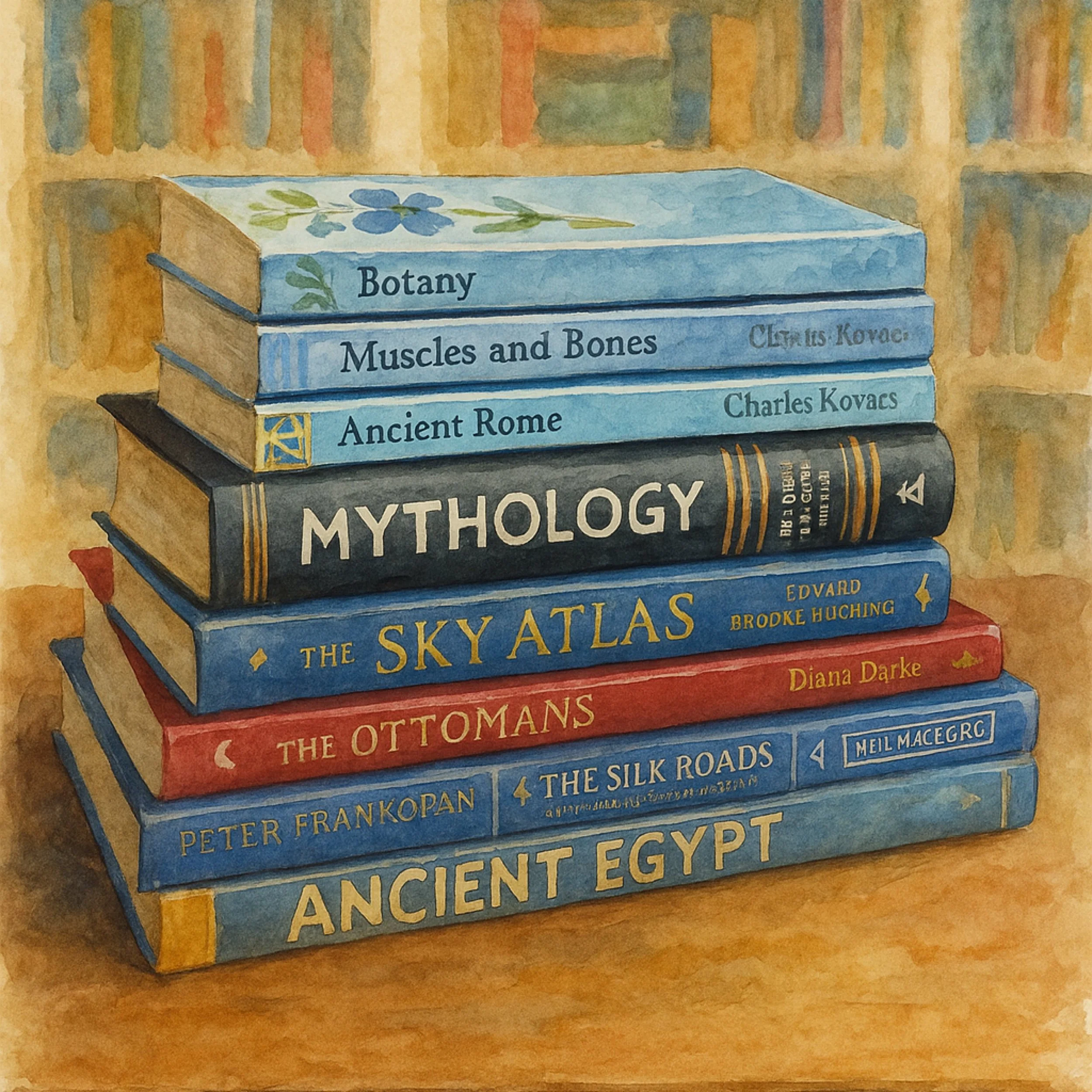
The Main Lesson Block
A Main Lesson Block is unique to the Waldorf pedagogy. Blocks rotate throughout the year, lasting about 3-4 weeks. During a block, a single subject is explored in depth.
-
The Main Lesson
What is a Main Lesson and how does it differ from other lessons? A Main Lesson is unique to the Waldorf pedagogy and follows a three day cycle unlike other methods of lesson delivery.
-
Opening Activities
Opening Activities are the first lessons of a main lesson. Playing games, doing mental math or practicing tongue twisters are some activities that help the students engage in preparation of the main lesson.
-
Daily Work
Daily work is necessary though separate from the work of a main lesson. Lessons in grammar and math are typical daily work practice that students perform daily to become proficient in practical skills.
Subjects
The Grades
Waldorf Inspired Homeschooling
Waldorf Materials
Waldorf Summer Seminar | Live Education
What is Waldorf Education?
When I first discovered Waldorf education, it felt like reconnecting with something already familiar. My journey began in the early 1980s when I attended a Waldorf school in a small town outside Paris. Those few years left an impression, though I didn’t realize it until much later. When my oldest child turned five and homeschooling became a possibility, I revisited Waldorf education and fell in love with it again. Since 2003, I have been homeschooling with a Waldorf-inspired approach, weaving its philosophy and methodology into our daily lives. For me, it has offered a framework that feels both natural and deeply nurturing.
The Waldorf philosophy is rooted in the understanding that children go through distinct developmental stages, roughly every seven years. In the early years, from birth to about seven, children are in the imitation phase, learning through play, observation, and movement. Around the age of seven, they move into a stage of emotional development where they begin to appreciate beauty, story, and rhythm in their lessons. Later, in adolescence, critical thinking and analysis come to the forefront, and the curriculum shifts accordingly. These transitions are supported with stories, art, and activities that match the child’s stage, so they feel seen and understood.
Waldorf education is also holistic, focusing on head, heart, and hands. Lessons are designed to engage the intellect, nurture the emotions, and involve the body through movement and hands-on work. This is why the curriculum is filled with music, art, drama, woodworking, and eurythmy alongside academic subjects, and my favorite: Handwork! I especially love how handwork is introduced early, starting with knitting in grade one. These projects are not only practical but also support brain development and coordination. They are carefully chosen to align with what the child is learning in their main lessons and with their stage of growth.
A unique aspect of Waldorf education is the main lesson and main lesson block structure. The main lesson is a long, two-hour period, usually in the morning, where the central subject of study is explored in depth. Lessons follow a rhythm of review, practice, and new content, with time for reflection in between. The main lesson blocks allow us to concentrate on one subject for several weeks, such as history, math, or science. This immersive approach helps the material settle deeply, and the rhythm of review and new content ensures that children retain and process what they learn.
Over the years, I’ve found that arranging our school year around main lesson blocks creates a natural flow that mirrors the arc of the seasons. Heavier subjects like math fit well at the beginning of the year when energy is high, while winter lends itself to reading-rich history studies. Spring invites science and outdoor exploration. Even though we take inspiration from Waldorf, I adapt the rhythm to suit my children and our family life. What I appreciate most is how the philosophy emphasizes balance, not just in the structure of lessons but in the way it nurtures the whole child. Whether you adopt the full method or just pieces of it, Waldorf education offers a thoughtful, beautiful way to homeschool.
July 2020
How to Create a Waldorf Environment
The Waldorf philosophy is one of educating the child as a whole emotional, spiritual and intellectual being. In the first seven years of life, the child is a bring of imitation. A time with the will dominates and emotions are dynamic and hard to control. The philosophy aims to education the child within each developmental stage with an appropriate environment filled with the materials and people needed to help the child through each stage of his growth and transition.
During the young years, it's so important to reduce or eliminate screen time. Not only does it free up time for more worthy endeavors, simply the act of watching the screen disrupts brain waves and that's especially significant in the young years.
Reducing plastic toys (especially the cheap ones) is going to present opportunities for more natural toys and that lend themselves to open-ended creative play. When you purge your home regularly, you become mindful of what you are getting rid of, and usually, it's not the high quality all-natural toys.
When you can't have everything you desire and your home is still filled with non-Waldorf item, don't worry, just hide them! Drape a sheet or other fabric on the TV, workout equipment or anything else that is invading your serene environment.
Have more suggestion? Leave them in the comment section.
Check out my other Waldorf videos related to education.
Here's a Waldorf website that might help you on your journey to understanding the philosophy more.
Why I Chose Waldorf
It's not so much choosing a philosophy as much as it's finding one that speaks to your mind and heart. That's what I found in the Waldorf education. I also found it in a couple of other educational models, but I tend to return to the Waldorf philosophy most often. This philosophy resonated with me for many reasons, with the main one being that it is tailored to the child's mental, spiritual, emotional and physical development. That's remarkable thing to do, and today I'll try to share my thoughts as best I can with information and examples. If you wish to join this collaboration with a video response, head on over to Chrissy's channel at Raising Joyfulness and let her know you're interested: Raising Joyfulness is no longer on YouTube. Here's Chrissy's video: Chrissy is no longer on YouTube.
When I first considered homeschooling, I knew there were many educational philosophies available, each with its own strengths. Yet I was deeply drawn to Waldorf education, perhaps because I attended a Waldorf school in France as a child, or maybe simply because its approach resonates with my heart. While I sometimes incorporate aspects of other models such as Charlotte Mason, Montessori, or classical education, I always find myself returning to Waldorf as my foundation. Its emphasis on the whole child—spiritual, developmental, and artistic—makes it feel like a natural fit for our family.
One aspect I especially appreciate is how Waldorf education weaves spirituality into the curriculum. As a religious family, I welcome the reminders to bring reverence, festivals, and deeper meaning into our daily rhythm. Though I may substitute my own religious elements where appropriate, the philosophy itself encourages this kind of integration. This creates a rich environment where stories, rituals, and celebrations nurture not only the mind but also the soul. It offers a framework that honors the presence of the spiritual in education, something I find missing in traditional schooling.
Another key reason I chose Waldorf is its respect for childhood development. The philosophy divides education into distinct stages: imitation from birth to seven, emotional development from seven to fourteen, and intellectual awakening through the teenage years. In the early years, children learn best by doing—baking, gardening, and storytelling. In the middle years, beauty and art take center stage, with subjects introduced through story and imagination rather than direct intellectual analysis. Later, as children grow, the curriculum transitions to history, science, and critical thinking at just the right developmental moments. This careful attention to timing feels respectful to the child’s growth and humanity.
The stories and lessons themselves have also been a source of inspiration for me. Whether it is comparing humans and animals in fourth grade, exploring Greek mythology in fifth, or moving into algebra and history in the later grades, each step is intentional and meaningful. The beauty of the art, the depth of the stories, and the alignment with developmental milestones all work together to create a sense of well-being for the child. These are the reasons I chose Waldorf education for my family, and why I continue to return to its philosophy with a renewed sense of purpose and gratitude.
Waldorf Homeschool Journey
It's misleading seeing how we homeschool now because it's not how we always homeschooled. We started at the kitchen table like most families and over the years our homeschooling space grew. Our supplies grew, too. We started out with very little and the little we did have, we carefully and mindful purchased. Soon we had more children and our supplies increased and then later we joined a homeschool charter school in which we received funds for educational supplies. We have since been able to purchase a lot more material for our homeschool journey. Though this items need to be returned to the school when we withdraw from the school, being able to purchase and use them now has been a tremendous help.
Recently, questions and lamentations about the supplies we use have come up. I thought it would be of value to hear how we first started homeschooling with a frugal approach.
Instead of buying inexpensive items in abundance, we carefully chose quality items and shared. We shared a single set of block crayons and a very nice paint brush, and I found paper at a local craft store at a reasonable price by shopping sales and using coupons. I also bought lots of supplies from ebay, making use of discounted shipping because items were grouped together.
Don't forget that your journey will look different after years of doing anything, so don't despair when your journey is not looking how you want...you'll get there!
Would you like to share your homeschooling journey? Make a video response and share it with me.
DETAILED Waldorf BOOK HAUL + I LOVE These Books!!!
This is more than a book haul. I give you snippets of info into the Waldorf philosophy and how we intend to use these books. The concepts in these books are nothing new to us; we done form drawing, watercolor painting and movement math, but these books are going to help provide more background information and definitely boost the inspiration. I'm super excited about them!!
A special thank you to all of you who have already shared the form drawing books online. Seeing them was the reason why I went to Amazon to buy them. Of course, Amazon then suggested other books, and I was immediately sucked in. A couple hundred dollars later, you have this: the most exciting book haul of our school year....hands down.
Here are some of the books we got:
Creative Form Drawing with Children ages 6-10: Workbook 1
Creative Form Drawing with Children Aged 10–12 Years: Workbook 2
Spelling by Hand: Teaching Spelling in a Waldorf School, a Guide for Class Teachers
Word Mastery Primer: For First and Second Graders
Colour Dynamics: Workbook for Water Colour Painting and Colour Theory
Painting and Drawing in Waldorf Schools: Classes 1 to 8
Top 3 Waldorf Inspired Toys
Waldorf inspired toys are ones that are made of natural materials and lend themselves well to open-ended imaginative play. When I think about my favorite Waldorf-inspired toys, the first that comes to mind are peg dolls and finger puppets. I’ve made many of these myself, but they’re also easy to find online or simple to create at home. What I love most about them is how open-ended they are. My children have spent countless hours inventing stories, acting out scenes, and letting their imaginations run free with these little figures. They invite creativity and allow for endless variations in play, which makes them a lasting favorite in our home.
Another toy that has been invaluable in our homeschool is wooden toys, especially natural wood blocks and sturdy toy trucks. These pieces are not only fun but also built to last. Over the years, I’ve noticed how beautifully wood ages, developing a patina that makes the toys even more charming, while plastic toys tend to lose their appeal as they scratch and dull. The durability and timeless beauty of wooden toys make them something I treasure and continue to encourage my children to use.
The last toy I want to share is play silks. These lightweight fabrics have brought so much joy and versatility into our playtime. My children have used them for everything from fort building to dress-up, as capes, or even as carriers for treasures. Though silks are lovely, any fabric can serve the same purpose, and I’ve found them to be a cherished part of our homeschool environment. They encourage imagination and have been loved for many years, making them one of the simplest yet most magical Waldorf-inspired toys in our home.
The Four Temperaments
Did you know that we are all a mix of the four temperaments? However, we tend to have a dominant temperament, a subdominant temperament, a temperament we loosely associate with a temperament that really doesn’t define us. But in actuality, we are a mix of all of them And striving for harmony between the temperaments we look to balance out our traits and qualities so that we can achieve an overall balanced temperament.
But how do you identify what temperament you are? How do you identify your strengths within that temperament? What shortcomings do you have to grow through as part of your temperament? And what can development of your temperament give you in your life’s journey?
The four basic temperaments are choleric, sanguine, phlegmatic and melancholic.
Choleric is associated with the color, red and blood. When the self dominates in adulthood, the temperament is choleric. Some attributes of the choleric temperament are leadership, extrovert, strong, willed, quick to anger, charismatic, confident, high standards of oneself and others, structured And fast.
The sanguine temperament is associated with air and the color yellow. When the astral body dominates an adulthood, the temperament is sanguine. Some of the sanguine traits are extrovert, socially inclined, charismatic, untidy, forgetful, shallow connection to body, loves variety in food, fashion, and travel, loves adventure, talkative, doesn’t hold onto feelings very long, move forward with ease, flexible, adaptable, lives in the present.
The phlegmatic temperament is associated to the color green and the element of water. When the euphoric body dominates an adulthood, the temperament is phlegmatic. Some of the traits and qualities of phlegmatic are slow and steady, loves routine, avoids, high pressure, avoids conflict, loves food and eating, loves comfort, doesn’t like interruptions, has trouble getting started, but once engaged in a task does not want to leave it until it’s finished.
The melancholic is associated to the color blue and the element of earth. When the physical body dominates an adult adulthood, the temperament is melancholic. Attributes of the melancholic are deep, introverted, loyal, detail oriented, works on skills until perfected, deep thinker, cold disposition, feels deep emotions, often thinks it’s their fault, or they are to blame in situations and are apt to hold grudges.
There are a couple of qualities that are shared by all four temperaments. All four temperaments can be stubborn in their own way. And all four temperaments are emotional, but it is expressed uniquely. For instance, the cleric is quick to anger while the sanguine is quick to love and excitement. The melancholic holds feelings for a long time while the phlegmatic has a harder time relating to their feelings, but through development, they may become more comfortable with their feelings.
All four temperaments are also sensitive. But what they are sensitive to depends on each of their qualities and traits.
Each temperament learns differently as well.
The choleric will learn from someone who is a trusted respected authority, whereas the melancholic will learn through a development of their sympathy and compassion, and the sanguine will learn from someone who they love and who they receive love from and a phlegmatic will learn through example and imitation, so provide a suitable example for the phlegmatic to learn from through imitation.
It is the quintessential fifth element that brings out the balance between the temperaments and that would be the ego. With the ego in charge, we can find balance within our temperament.
Resources include but are not limited to Authentic Parenting by Bari Borsky and Judith Haney and Children and their Temperaments by Marieke Anschütz
